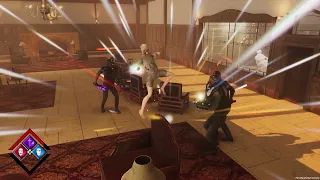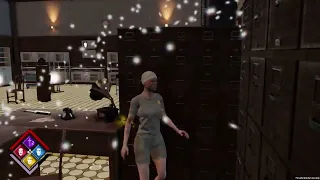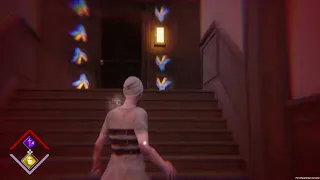High Level Concept
You embody Hedera, a young guinea pig imprisoned in an inhumane experiment... Escape, free your comrades, use logic, perform acrobatics, tap into your empathy, control your emotions, and above all, use your psychic powers in this utterly wild action game!
Constraints
1. Close to no text on screen.
2. Third Person Controller & Unity Engine.
3. 4 meters wide modules to create the levels.
4. Must take place in an Ivy-League University.
5. 15 weeks to produce a gold version.

My Role Description
As Lead Game Designer
1.
Orchestrating departmental synergy, ensuring a unified gameplay goal and shared understanding.
2.
Safeguarding the game's core vision amid creative exploration.
As Game Designer
3.
Crafting distinctive mechanics, blending third-person shooter, psychic powers, and puzzles.
4.
Producing top-notch, comprehensible documentation (GDD & RGD) as development blueprints.
As Developer
5.
Meticulously coding elements to enrich and elevate the gameplay experience.
6.
Innovating tools tailored for Level Designers, empowering efficient and captivating environment creation.
Game Pillars
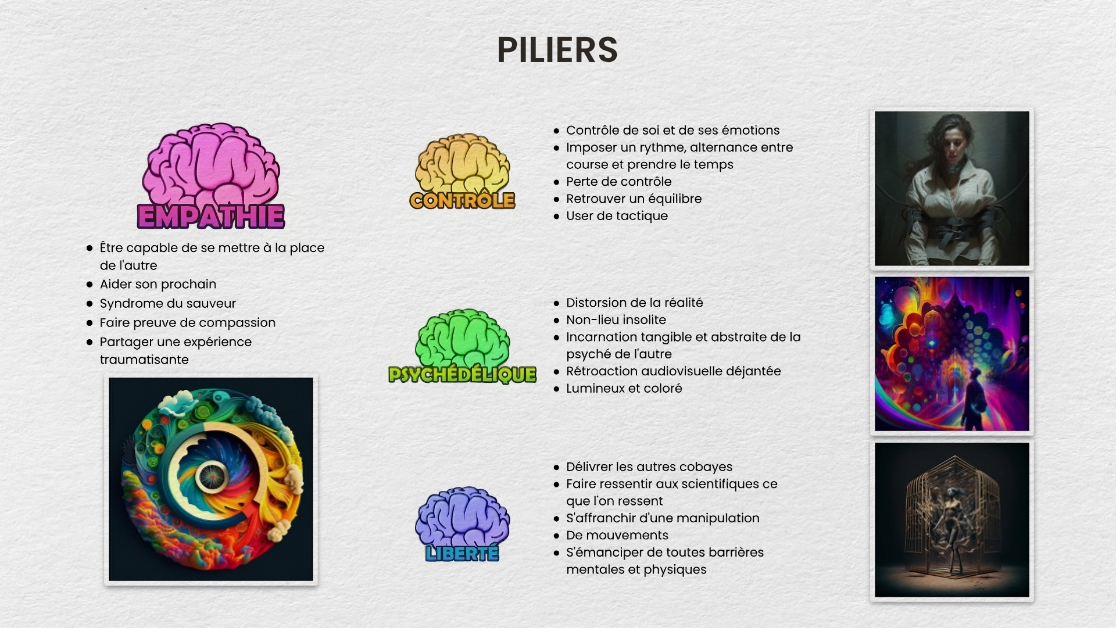
Level 1 Environment
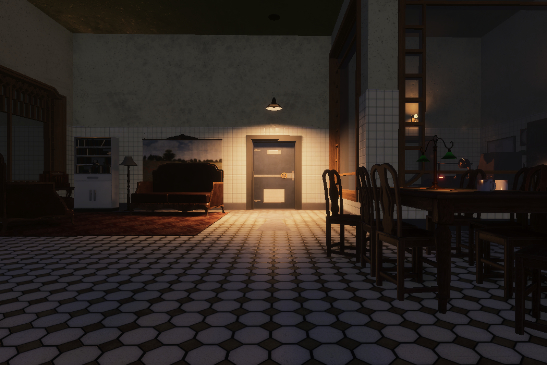
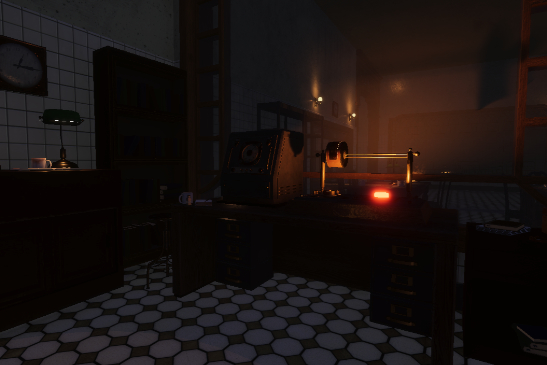
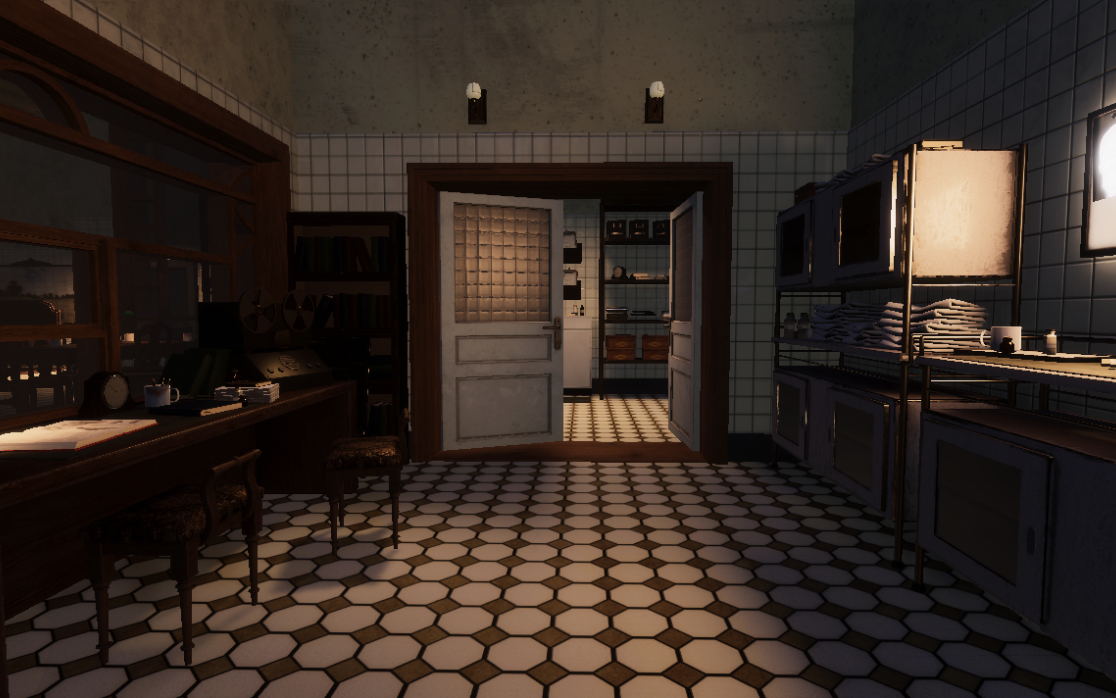


Level 2 Environment
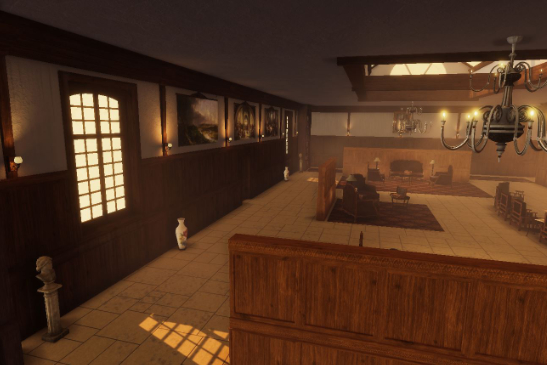
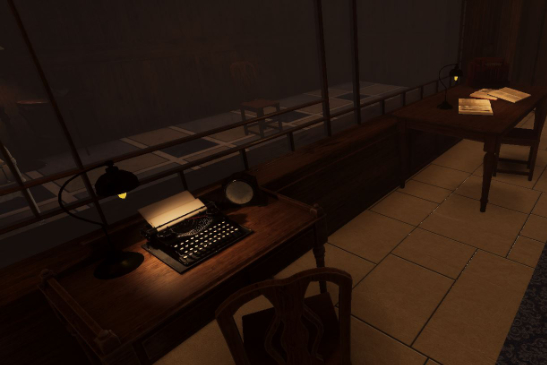
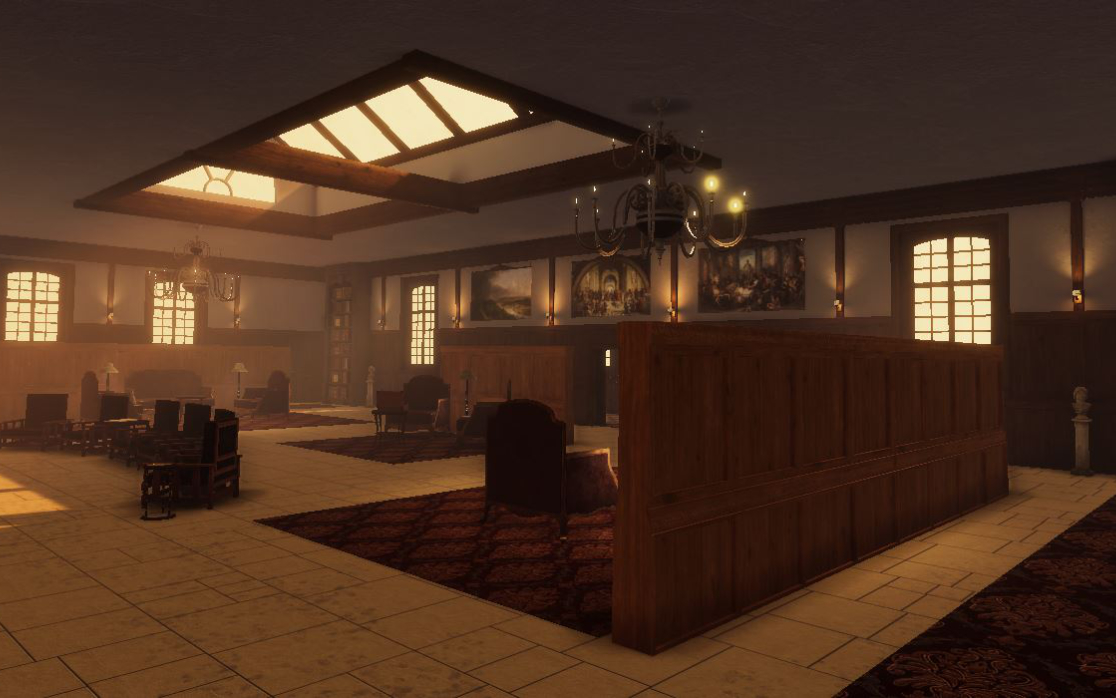
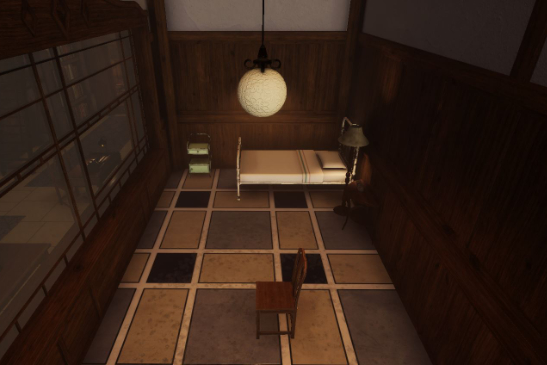
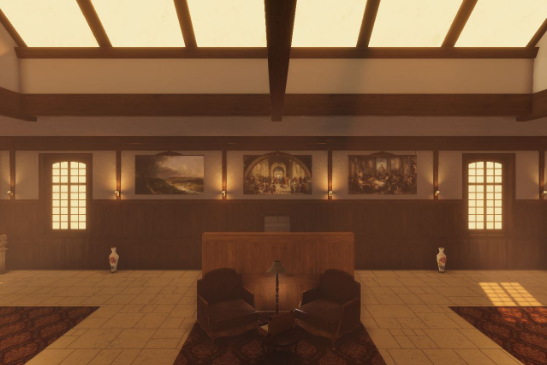
Level 3 Environment
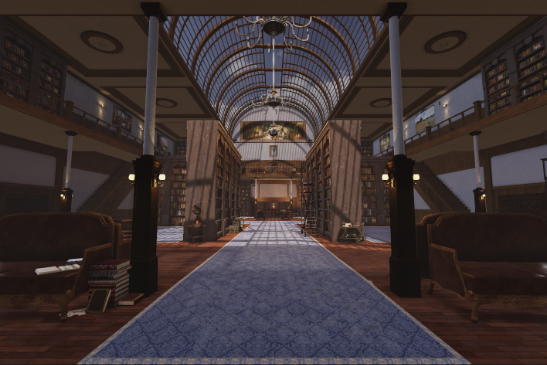
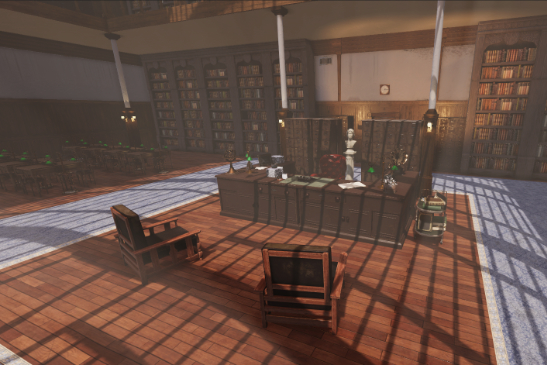
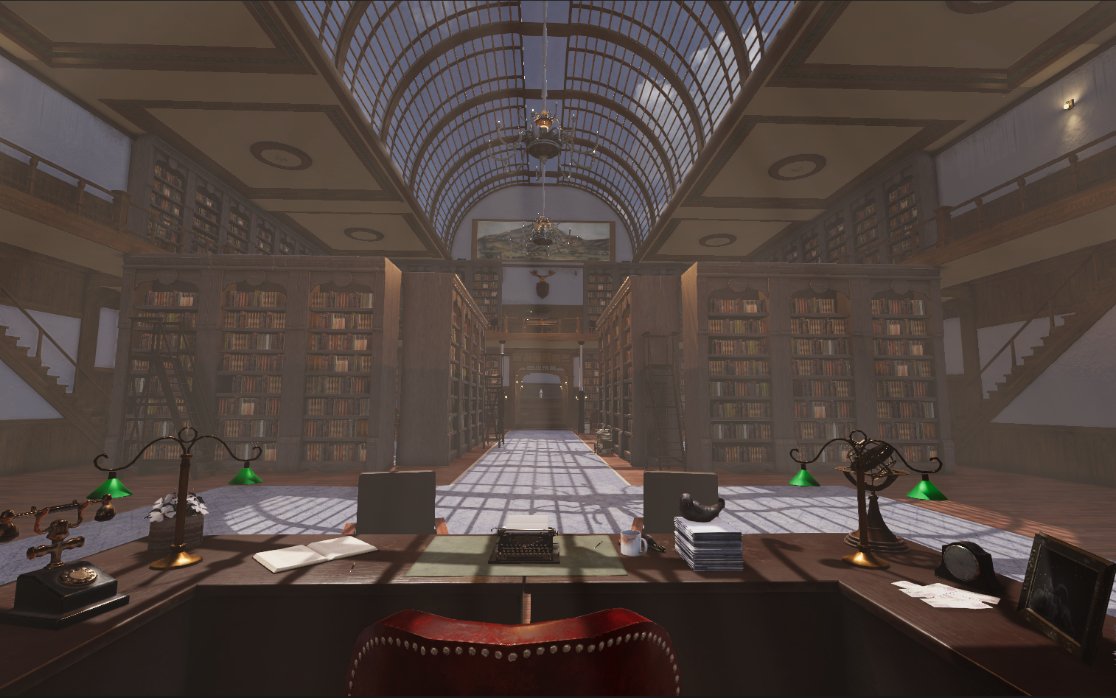
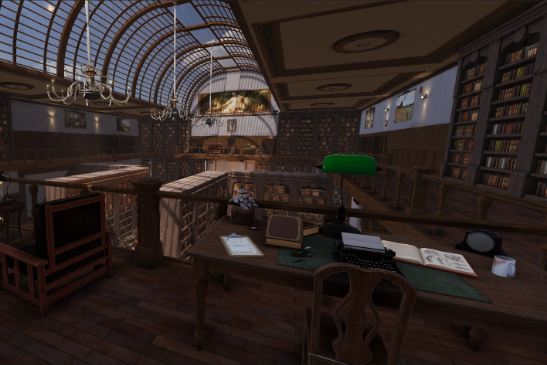

Level 4 Environment
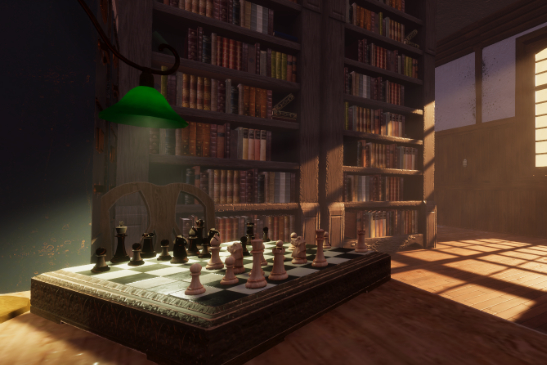
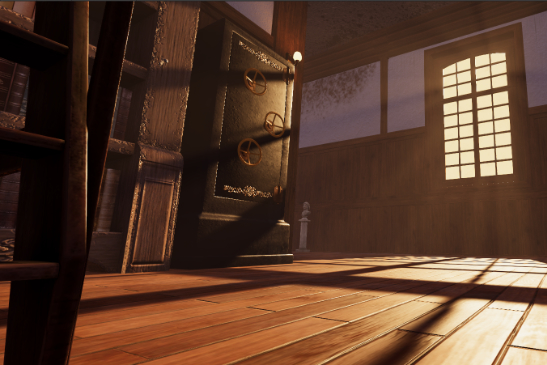
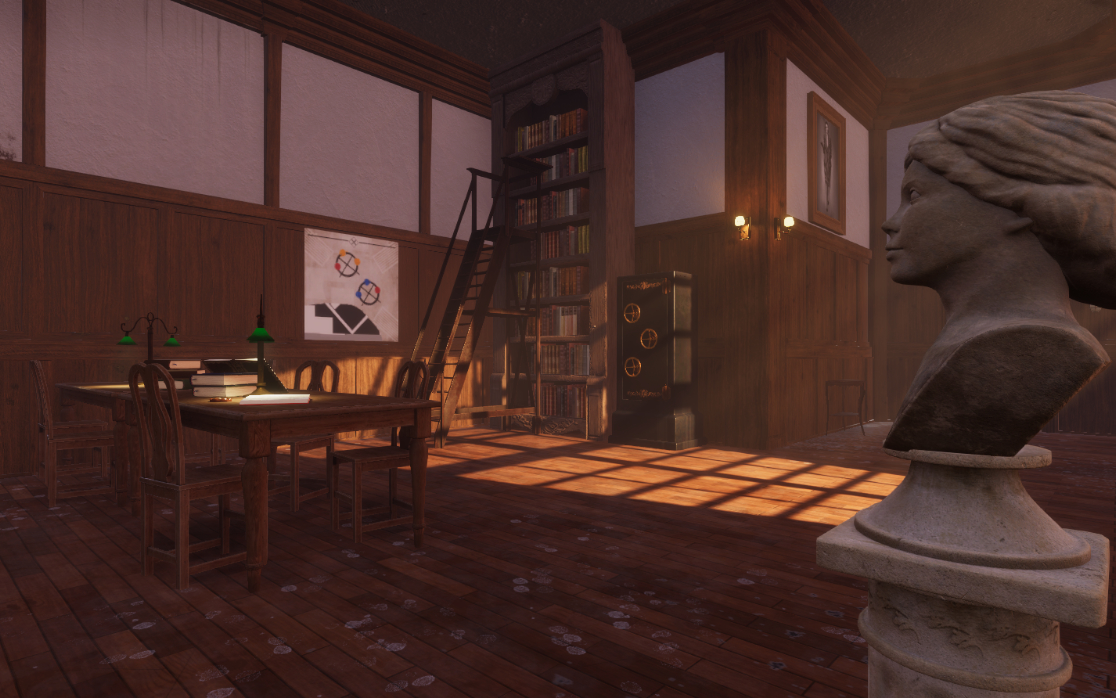
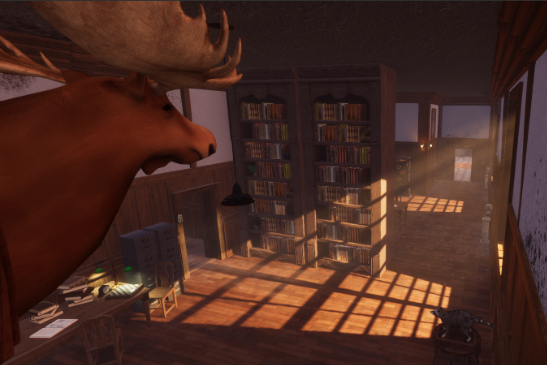
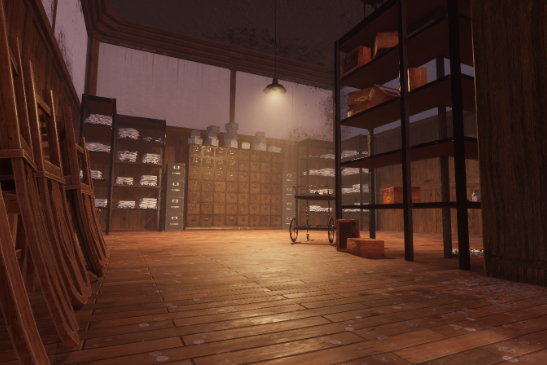
Design Process
Features Ownership
Our team embarked on the thrilling journey of creating a third-person shooter set in the intriguing backdrop of the Cold War era of the 1940s and 1950s. This game challenged players to harness psychic powers to combat militarized scientists who held them captive.
Within our collaborative team of 37 individuals, four of us took on the roles of game designers and developers. Each of us held ownership over specific aspects, such as enemies, collectibles, skill trees, and more
As a designer, my responsibilities extended to crafting the combat mechanics, hazards, gameplay ingredients, puzzles and of a unique special feature known as "psynaptic projection".
As a developer I worked on the hazards, ingredients and puzzles and contributed to the "psynaptic projection".
Within our collaborative team of 37 individuals, four of us took on the roles of game designers and developers. Each of us held ownership over specific aspects, such as enemies, collectibles, skill trees, and more
As a designer, my responsibilities extended to crafting the combat mechanics, hazards, gameplay ingredients, puzzles and of a unique special feature known as "psynaptic projection".
As a developer I worked on the hazards, ingredients and puzzles and contributed to the "psynaptic projection".
A. Combat Design
Our game design process drew inspiration from Plutchik's emotion wheel, focusing on three core emotions: anger, sadness, and joy, along with their intensity variations. We aimed to create a fluid and strategic combat system where players must manage their emotions to avoid overheating. Our design approach emphasized empathy, resulting in the incorporation of features like shields and ultimate attacks to enhance gameplay.
1.
Regular Attacks : In our game, regular attacks take on the role of secondary weapons or pistols. Beyond combat, they also serve as versatile tools for manipulating game ingredients and solving puzzles, adding depth and utility to the player's arsenal.

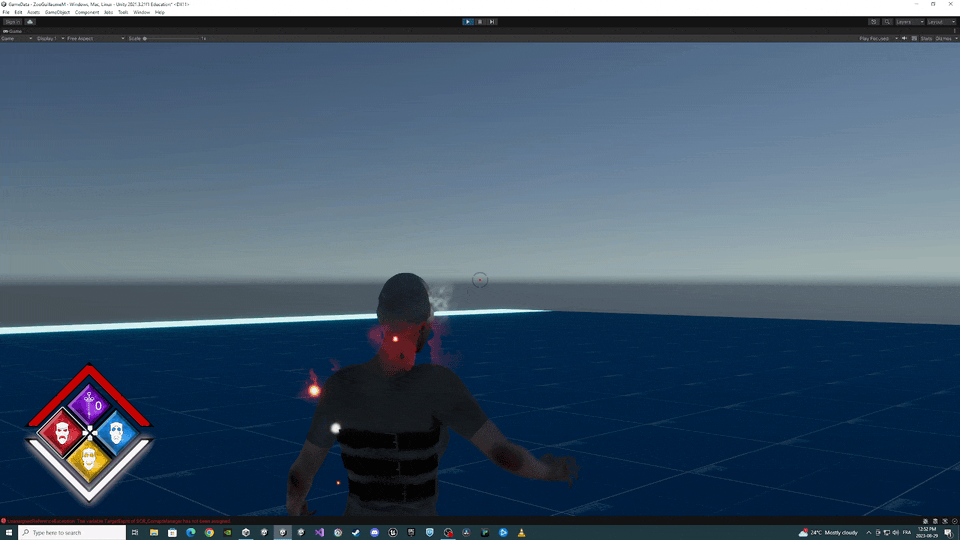
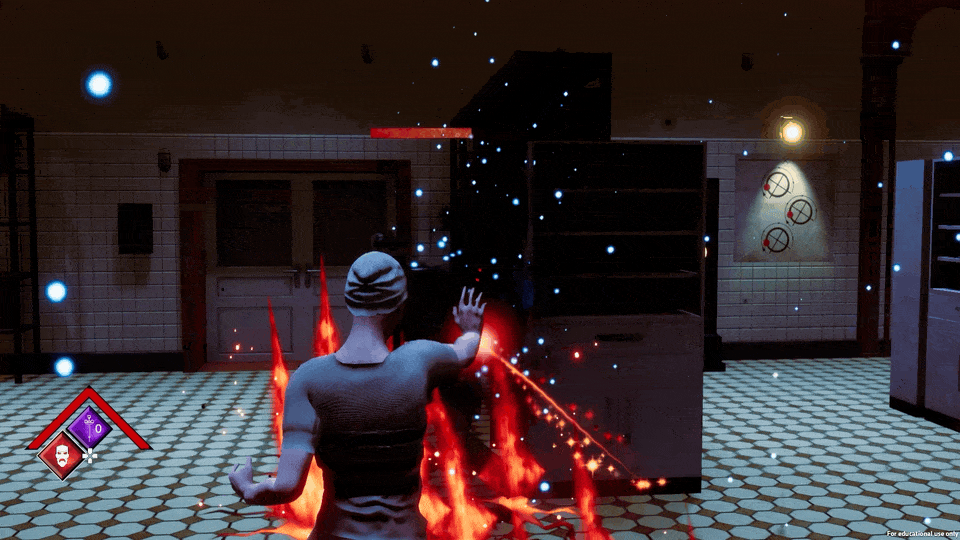
2.
Anger Attack : The anger attack functions as a shotgun-style weapon, excelling in close combat with a wide spread and formidable power. Its intensity builds as players use this emotion more, and by holding the trigger, it can unleash a double shot for added impact.

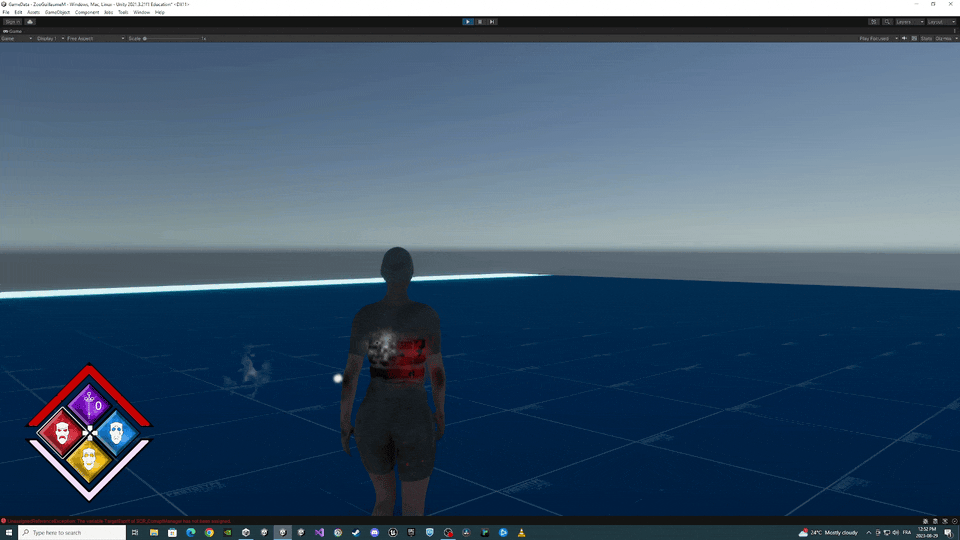
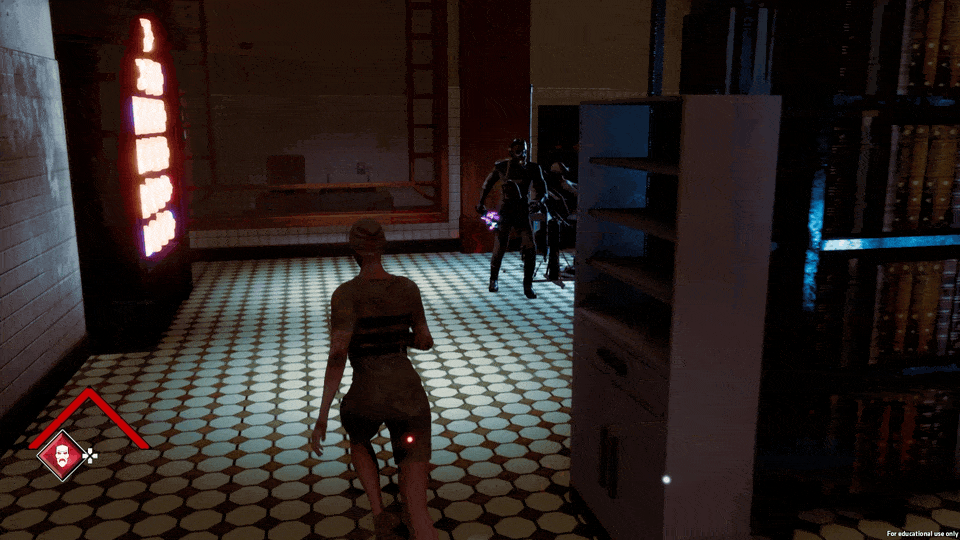
3.
Sadness Attack : The sadness attack serves as the game's grenade, with intensity increasing as the player employs this emotion, expanding the grenade's blast radius. Holding the trigger allows the player to concentrate 2 or 3 charges simultaneously, offering strategic versatility.
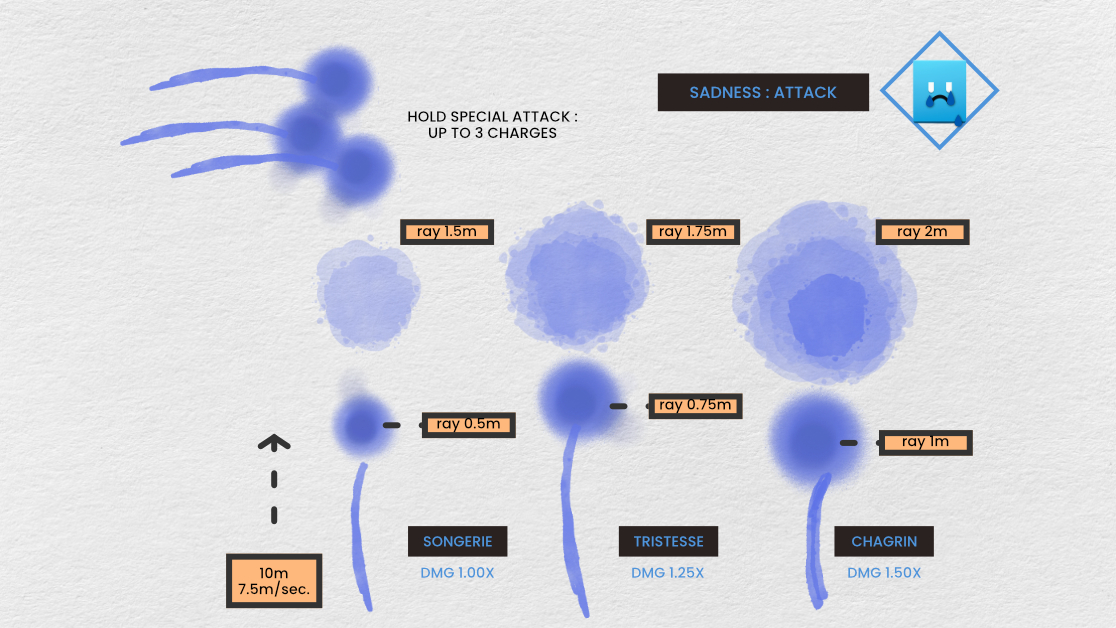
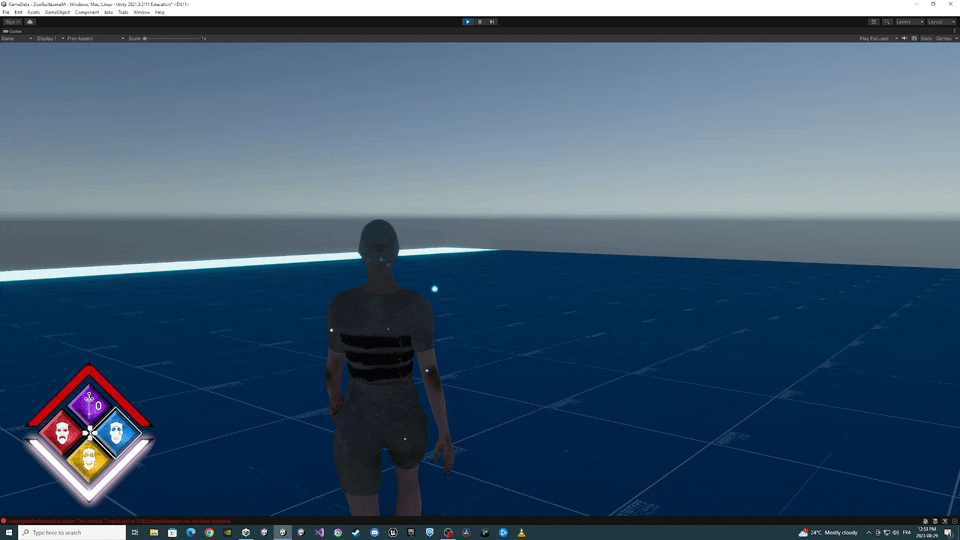
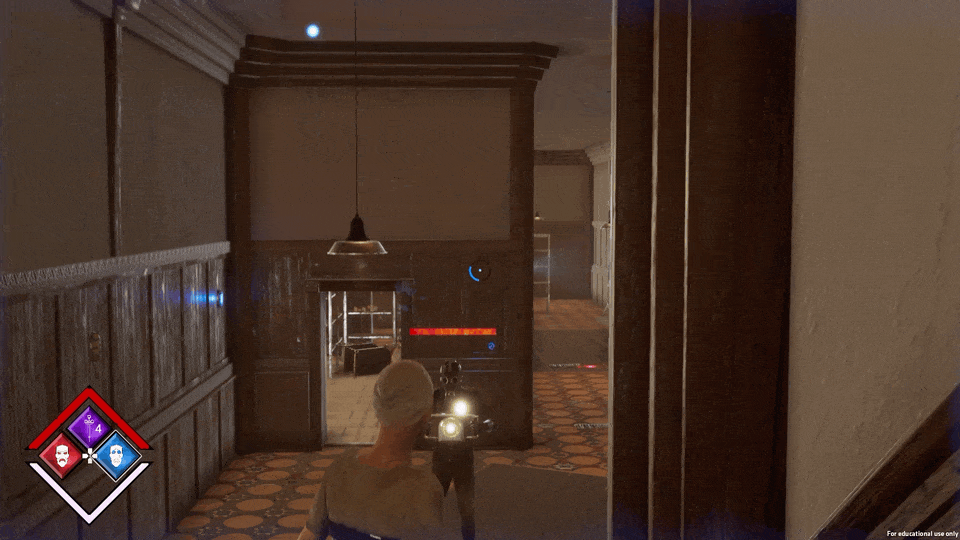
4.
Joy Attack : The joy attack functions as an assault rifle in the game, offering excellent range and precision. Its intensity grows with repeated use, and when held, it transforms into an automatic weapon, firing multiple projectiles for sustained firepower.
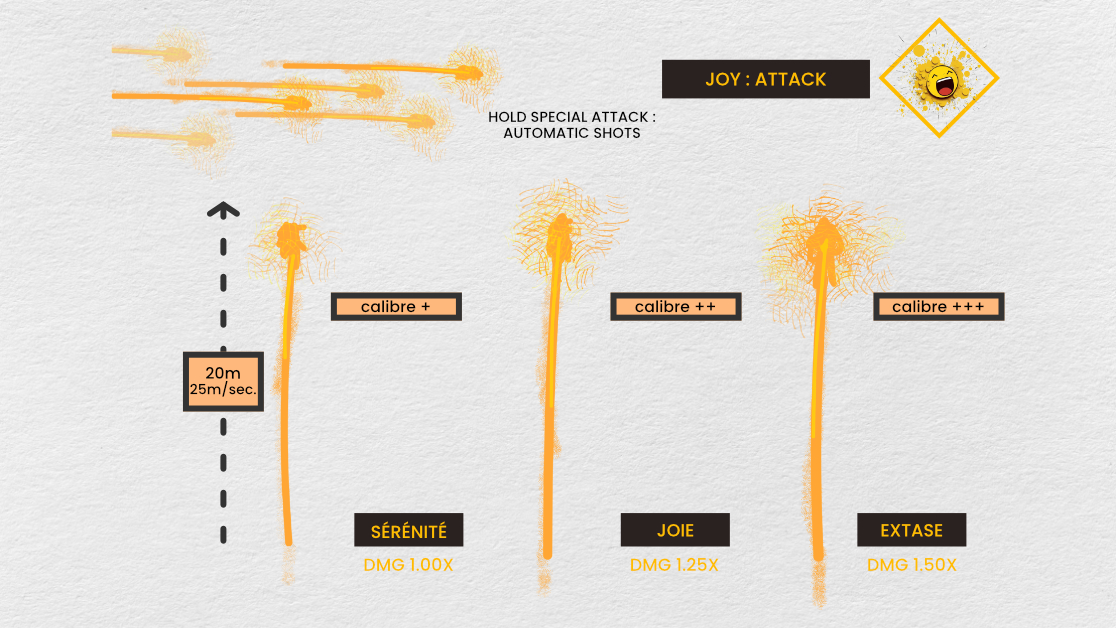
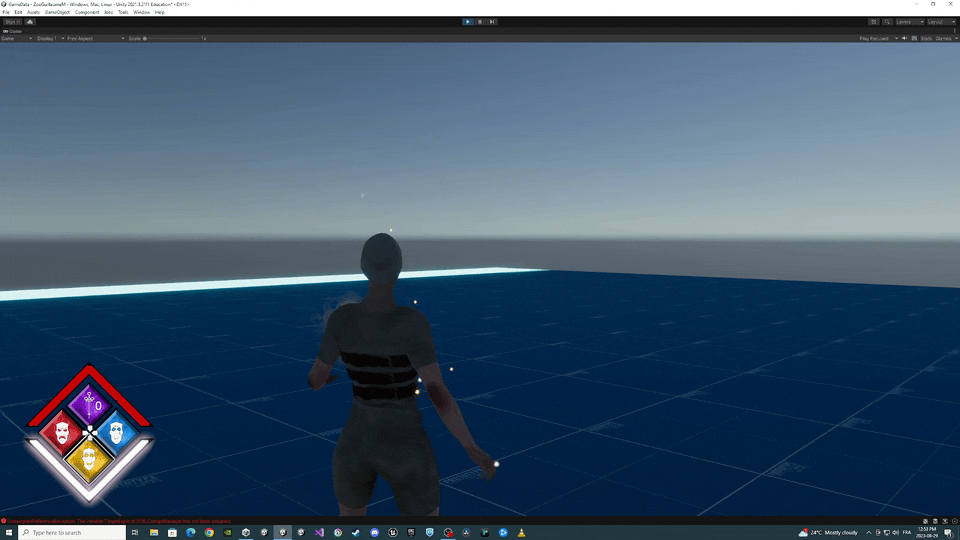

5.
Empathic Shield : The empathic shield plays a crucial role in defense strategy, blocking enemy attacks. A perfectly timed block generates emotional charge, enhancing its utility beyond protection.
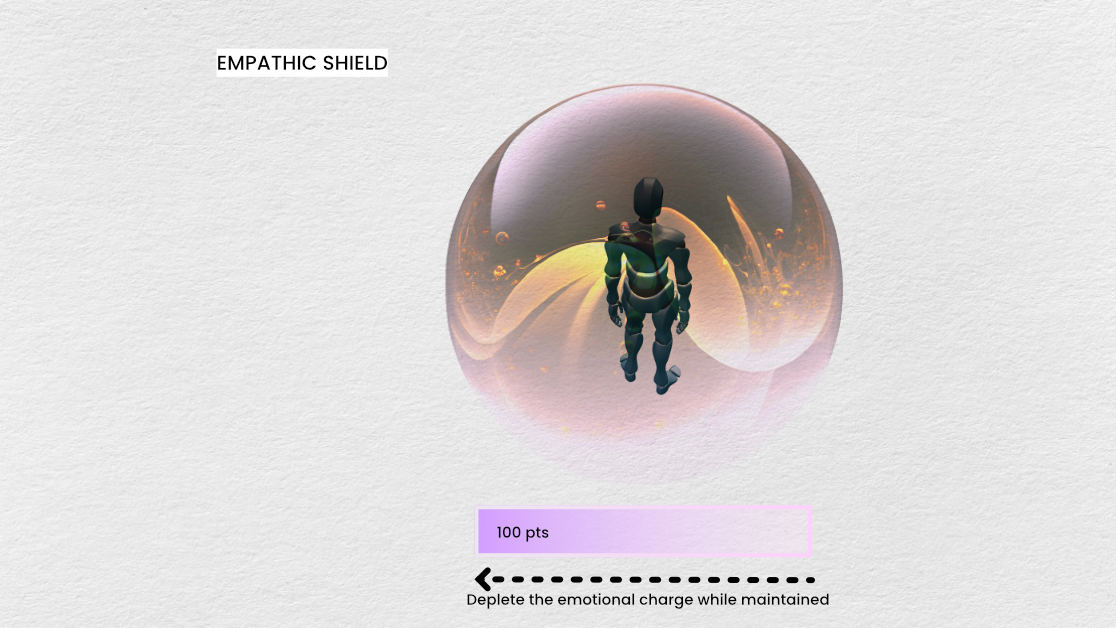
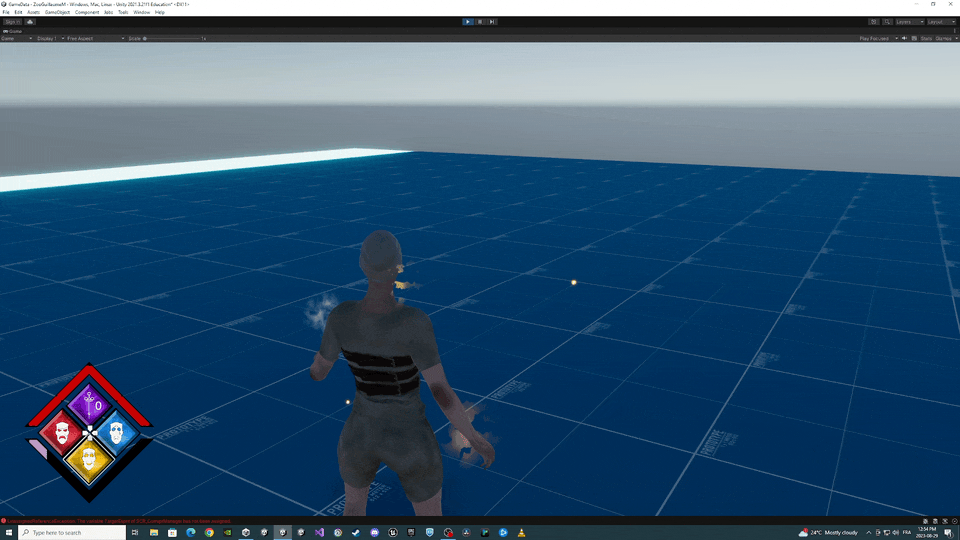
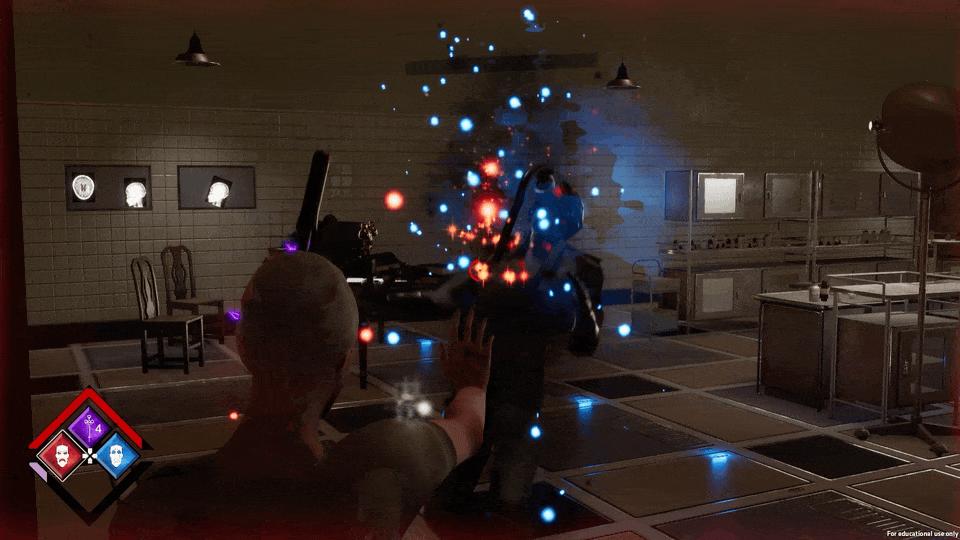
6.
Ultimate Attack : The game features an ultimate attack with a 360-degree area of effect, capable of defeating all enemies it touches. As the game progresses, players can increase the attack's radius for even more devastating impact.
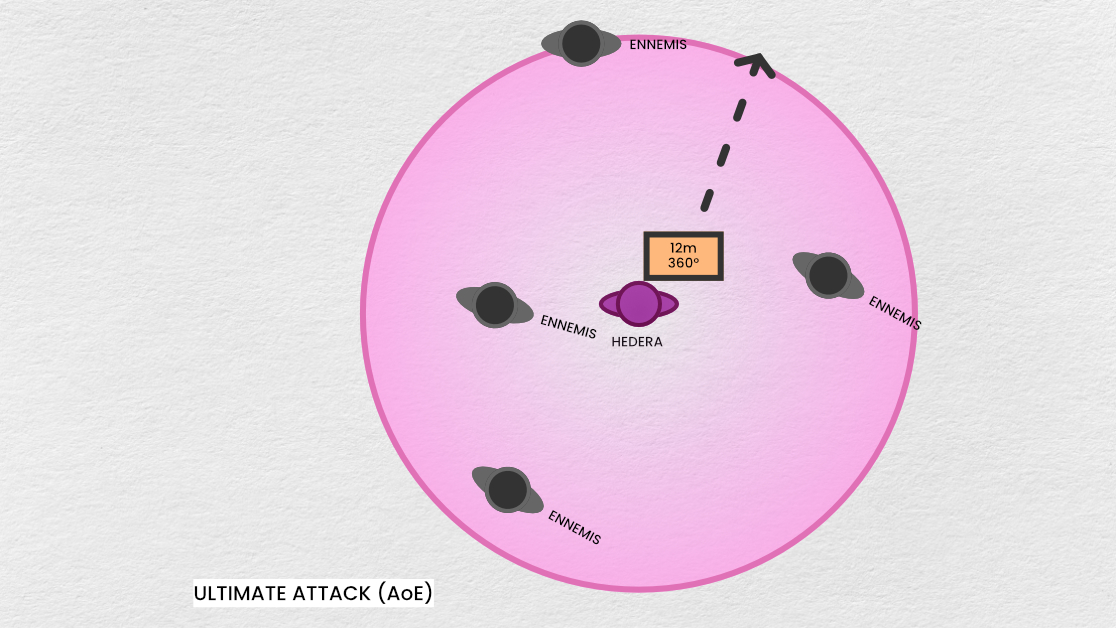
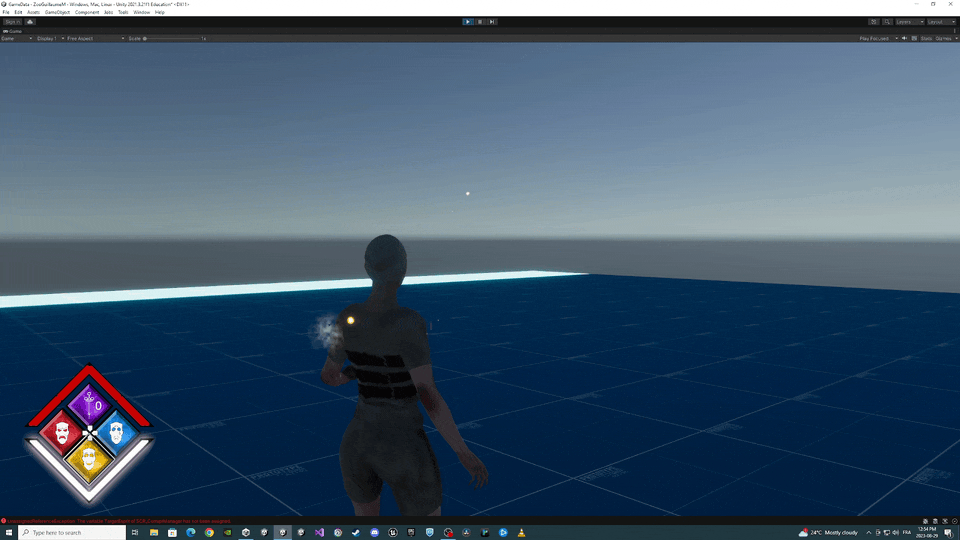
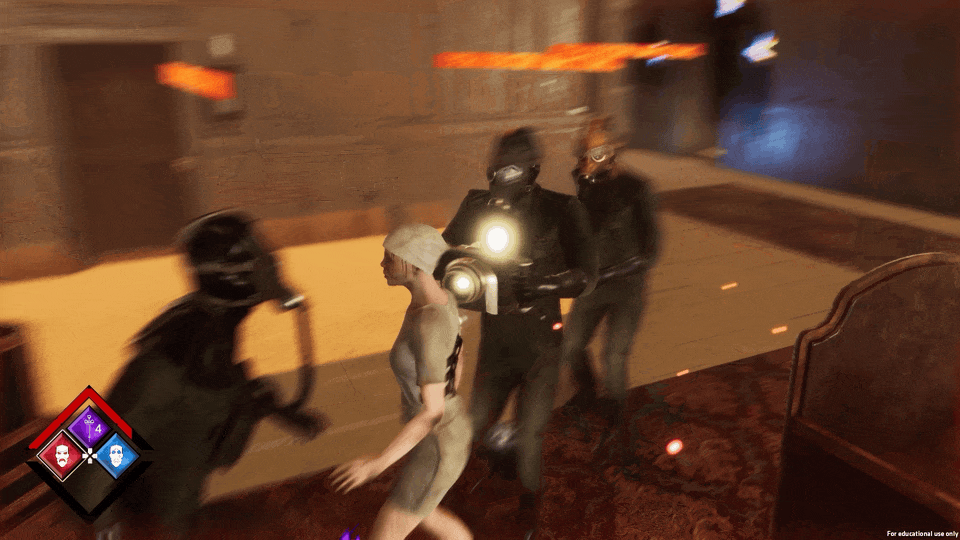
Hedera Combat GDD (click directly on the image)
B. Hazards
In our design process, we sought to address a level design requirement that involved enhancing player navigation with elements of risk and puzzles. We also aimed to introduce strategic elements into combat situations by incorporating hazards.
I created essential tools to empower level designers, facilitating their work and unleashing creativity across all these intricate game features.
I created essential tools to empower level designers, facilitating their work and unleashing creativity across all these intricate game features.
1.
Gas Trap : The gas trap restricts player movement, combining two types of gas into one during production. Being in the gas depletes both emotional charge and health over time, while traversing it entirely results in the player being knocked out.
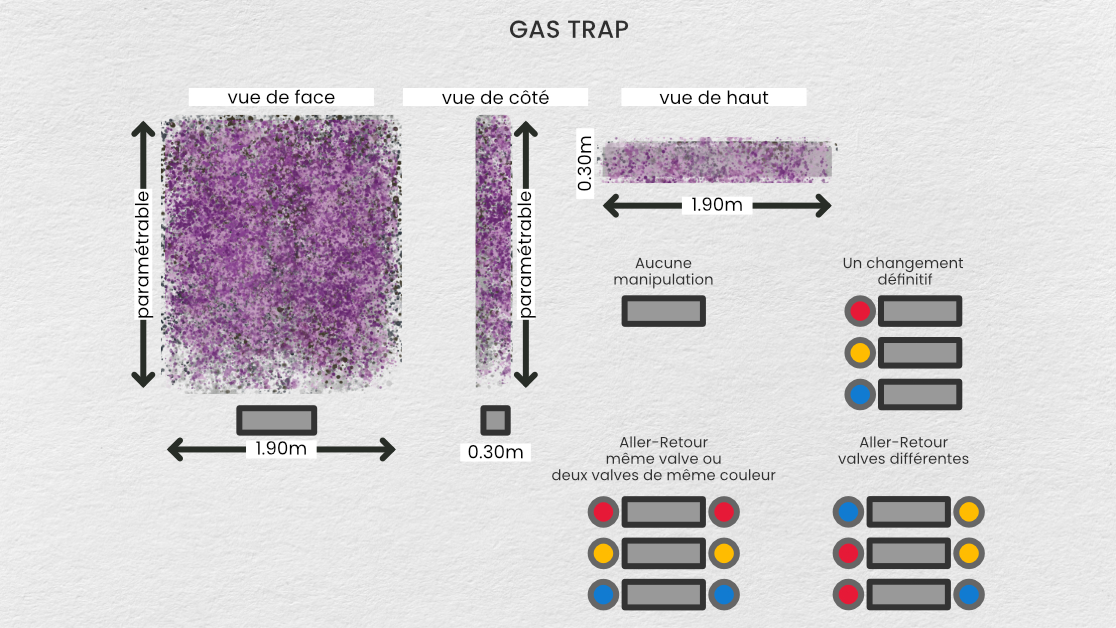
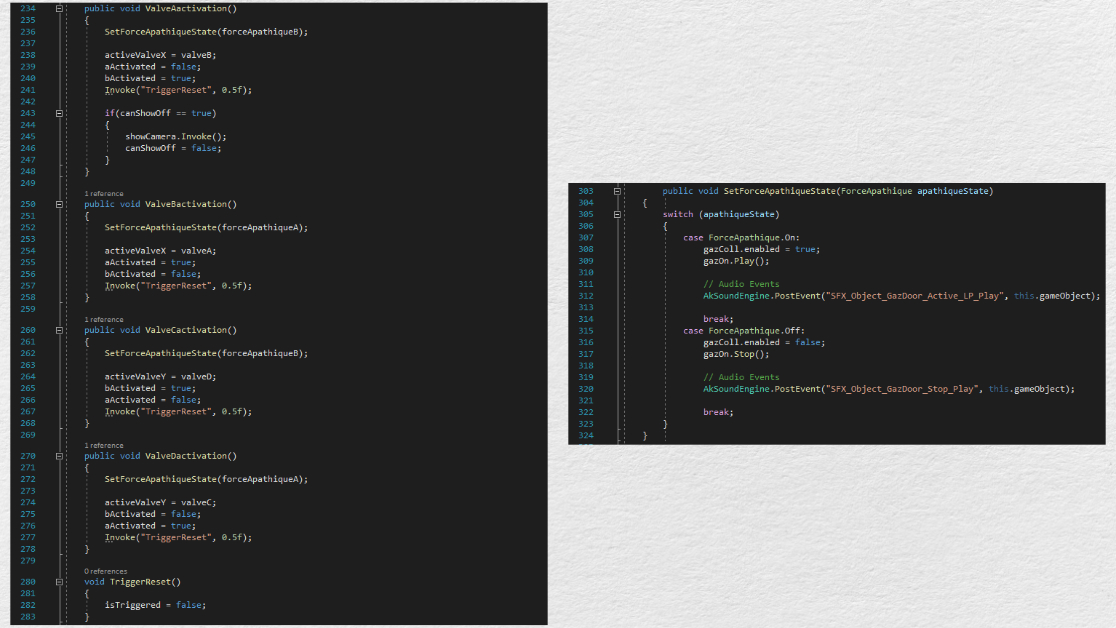

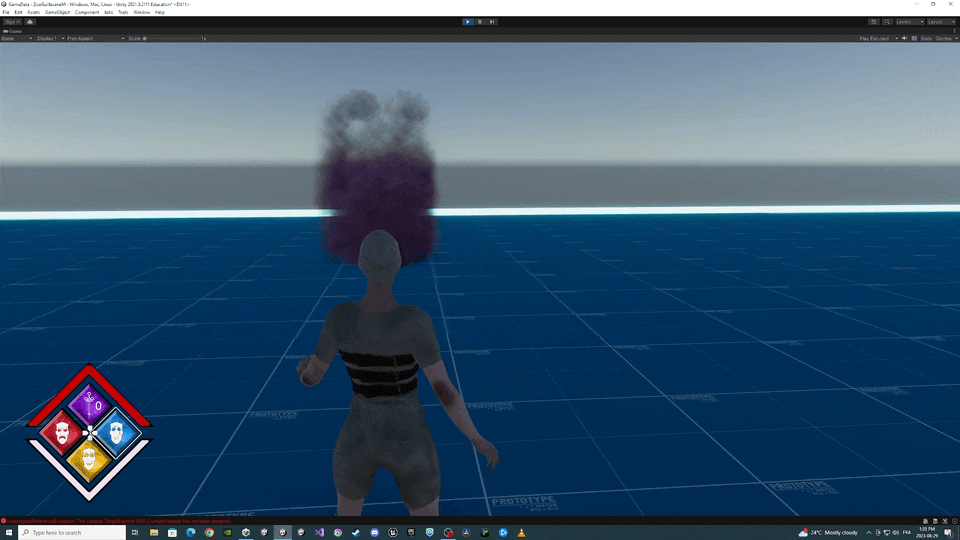
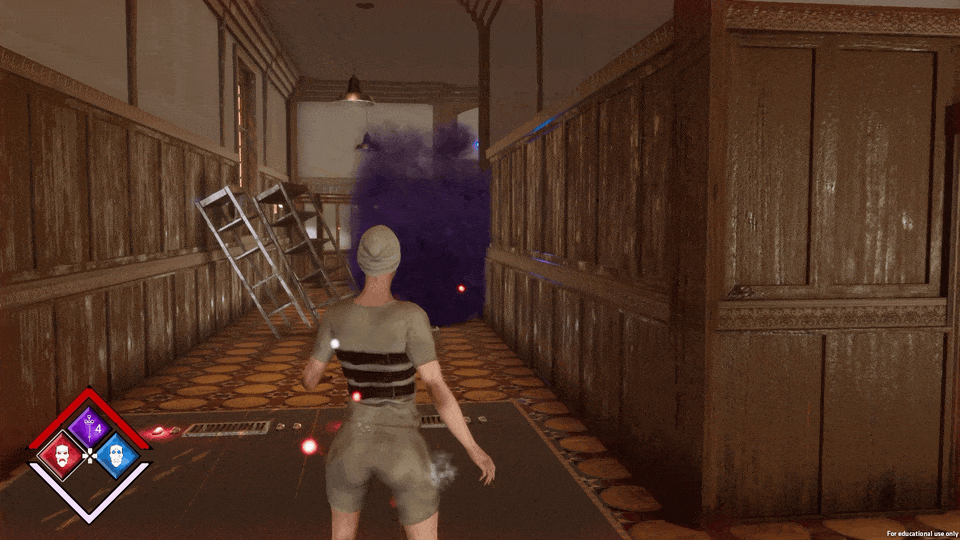
2.
Gas Valve : Valves control the states of the gas trap, introducing strategic and puzzle elements to the game. In development, we expanded the design to allow up to 4 valves on a single trap, enabling level designers to craft more complex and challenging puzzles.

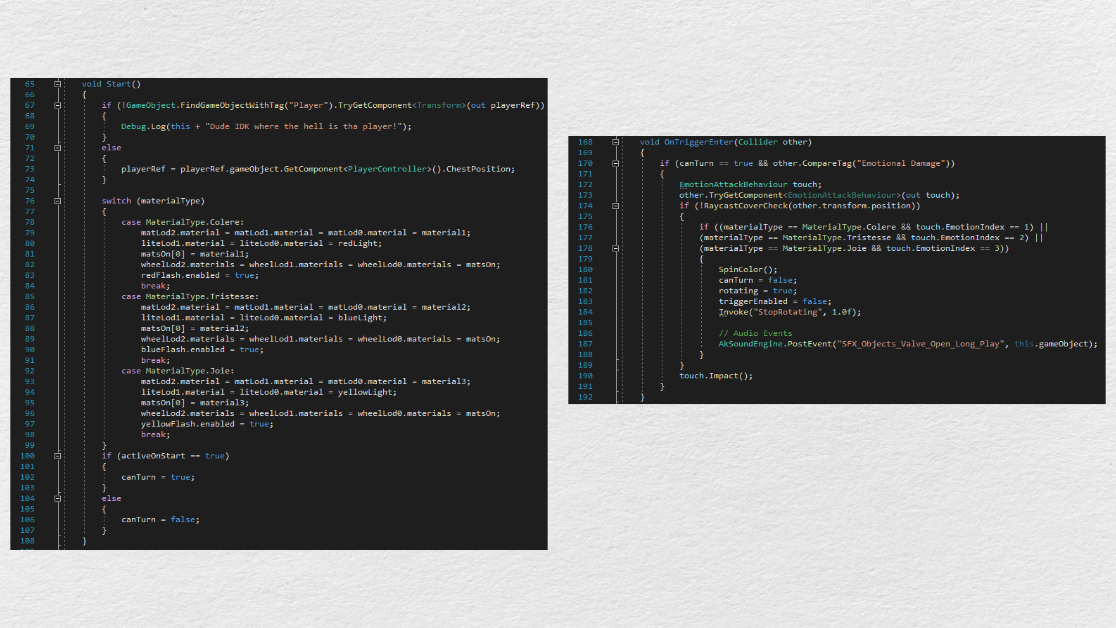

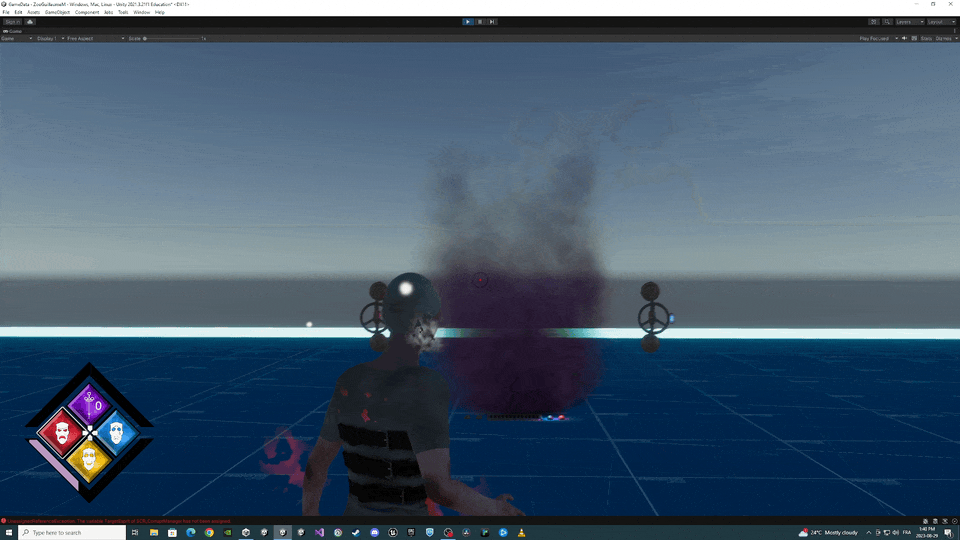
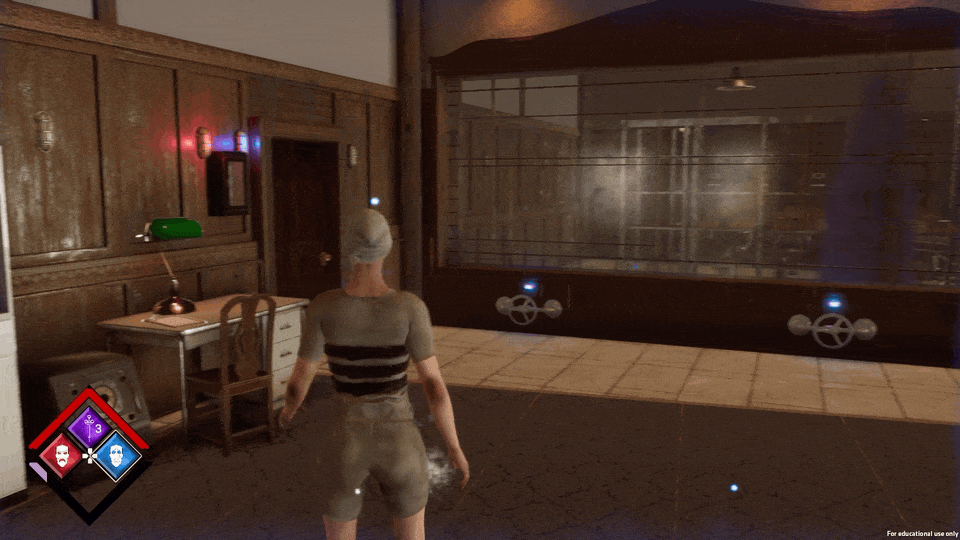
3.
Automatic Gas Trap : To add pressure and restrictions in specific rooms, we introduced the automatic gas trap. This innovative feature empowered level designers to create immersive challenges that intensified gameplay experiences.
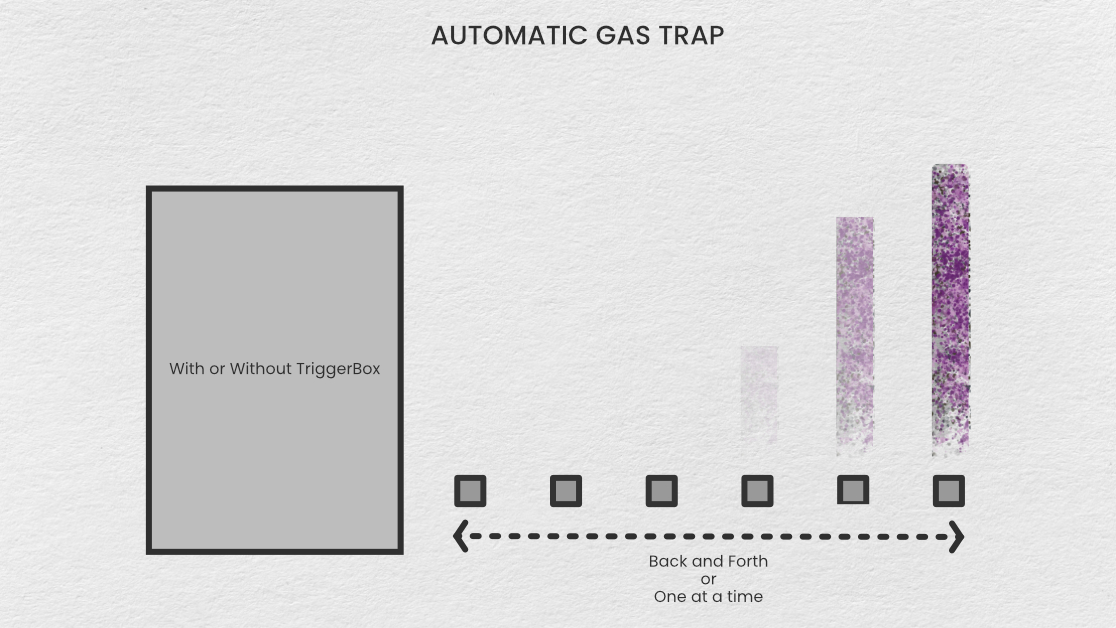
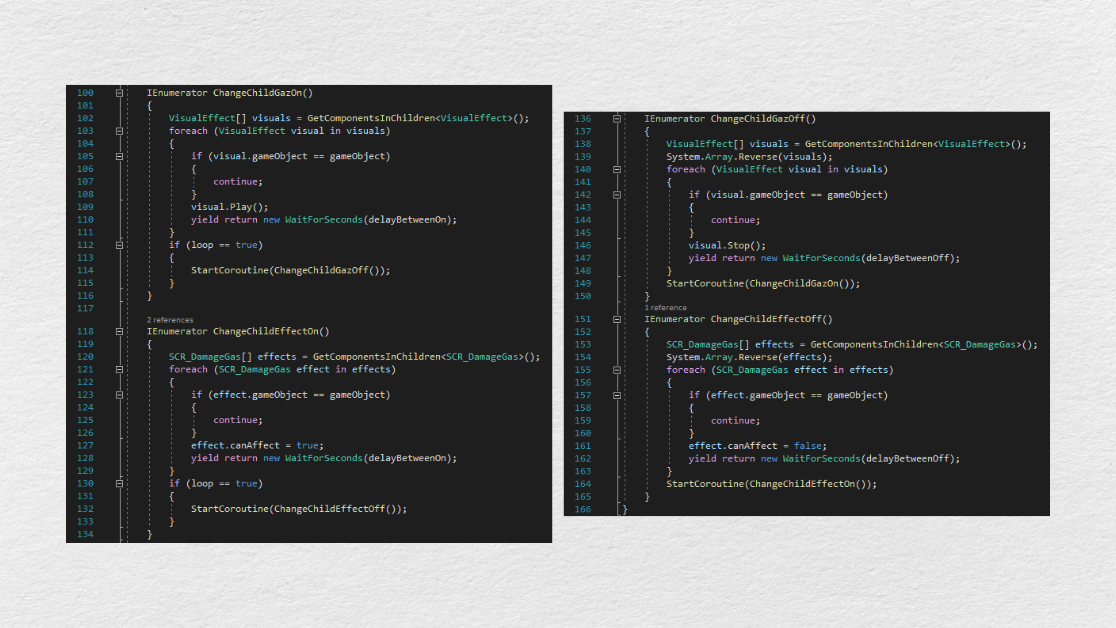
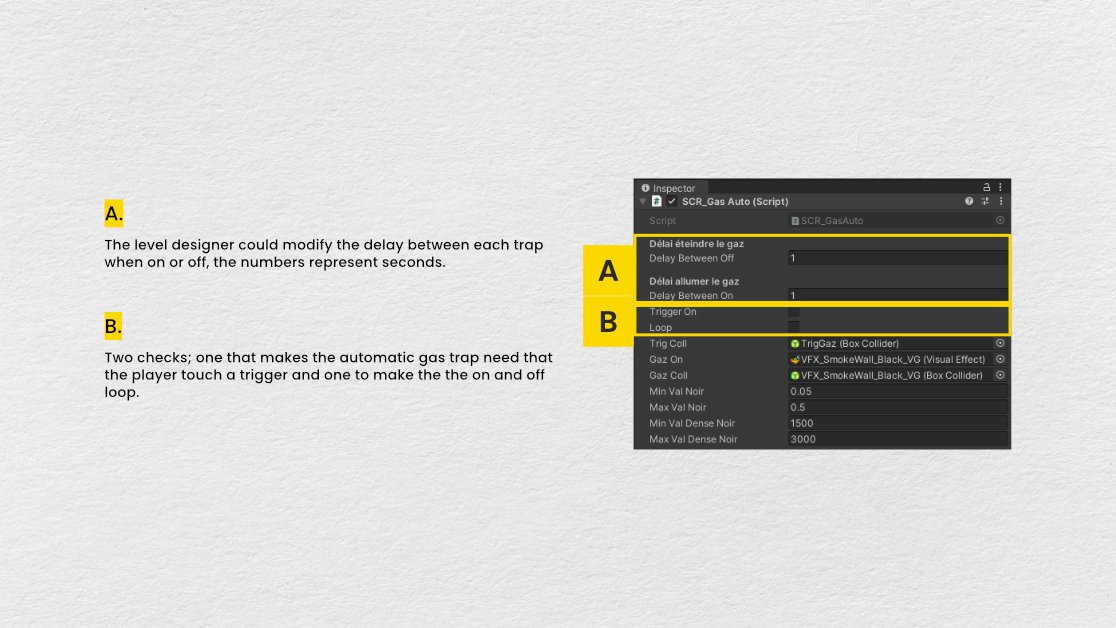

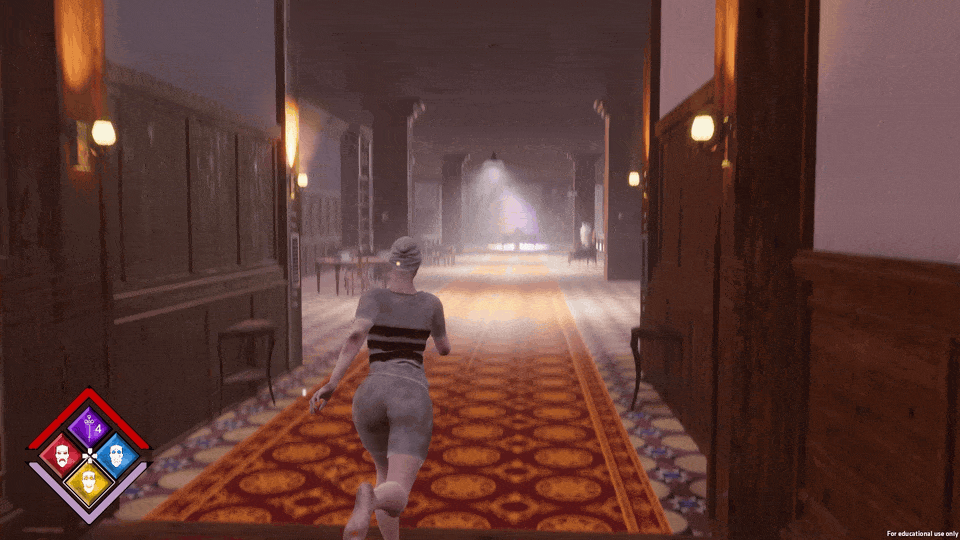
Hedera Hazards GDD (click directly on the image)
C. Gameplay Ingredients & Puzzles
In our level design process, we strategically incorporated small puzzles throughout the game to control the pacing effectively. These puzzles served as a valuable tool for modulating the gameplay experience, transitioning players from intense combat situations to more tranquil and mentally engaging moments, thereby enhancing the overall level design.
I developed tools that empowered level designers, streamlining their work and fostering creativity throughout the implementation of these complex game features.
I developed tools that empowered level designers, streamlining their work and fostering creativity throughout the implementation of these complex game features.
1.
Emotional Door Lock : The door lock's response to precise emotion charges gives level designers a tool to regulate player pacing and offer hints about forthcoming psychic powers, enhancing the overall game experience.
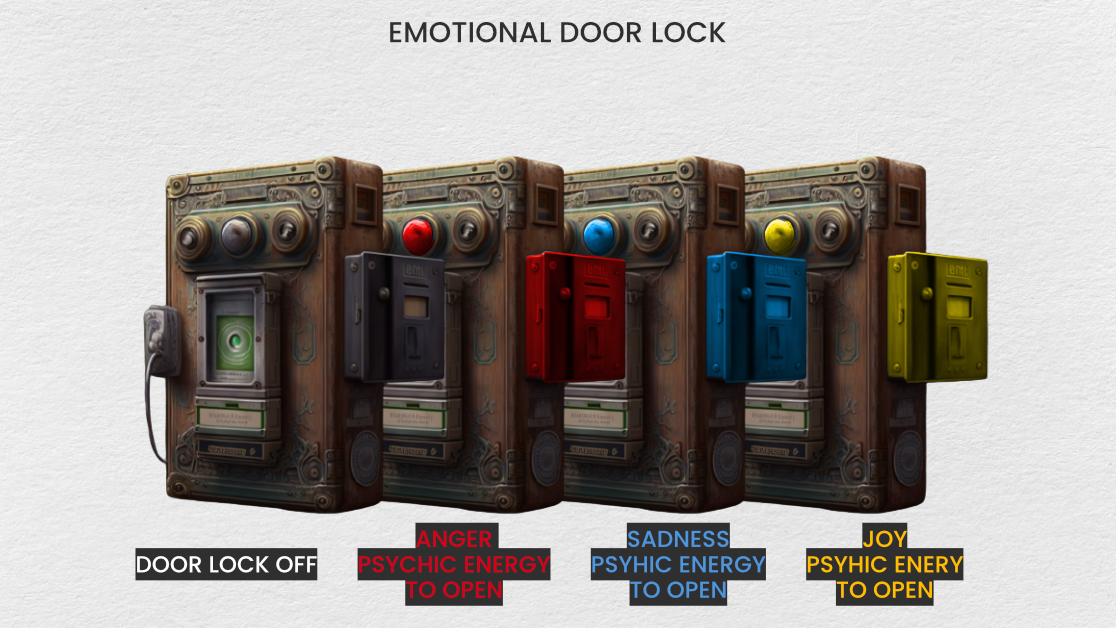
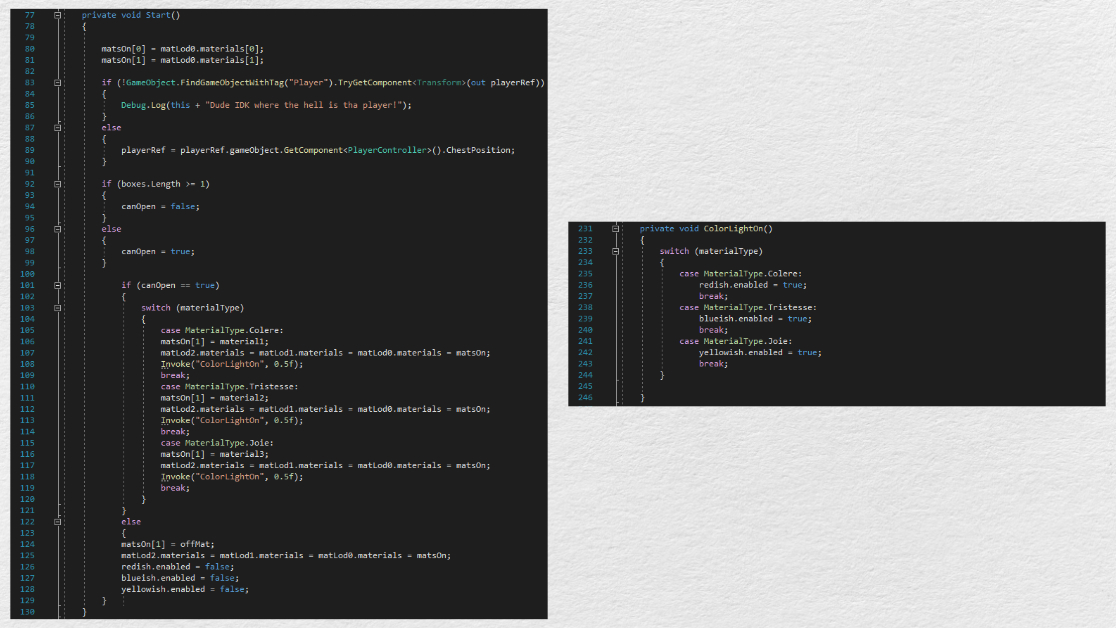
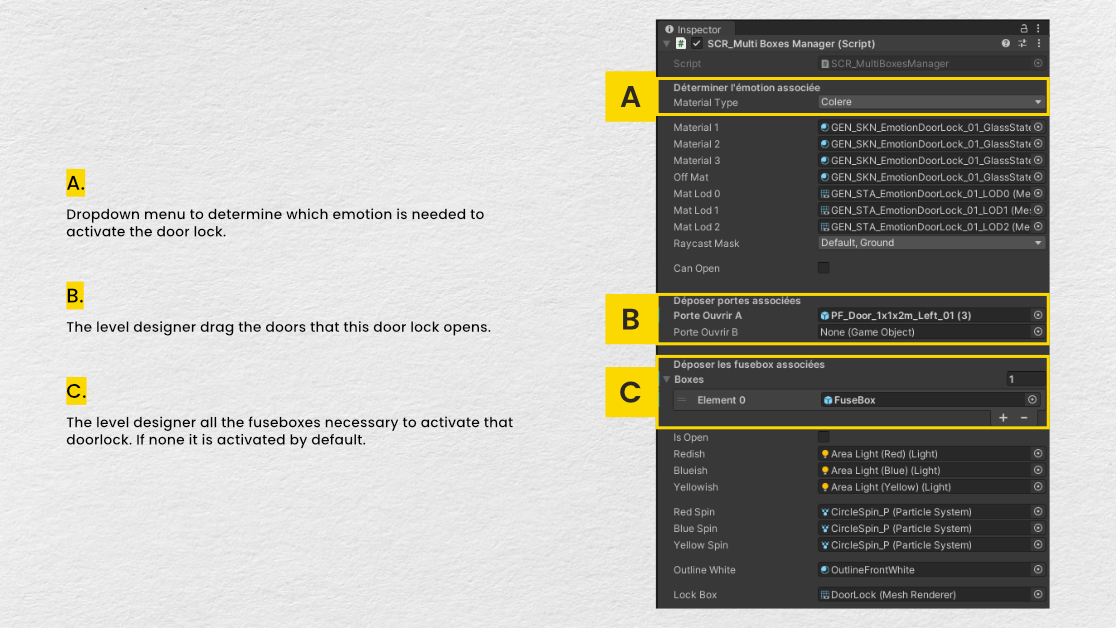
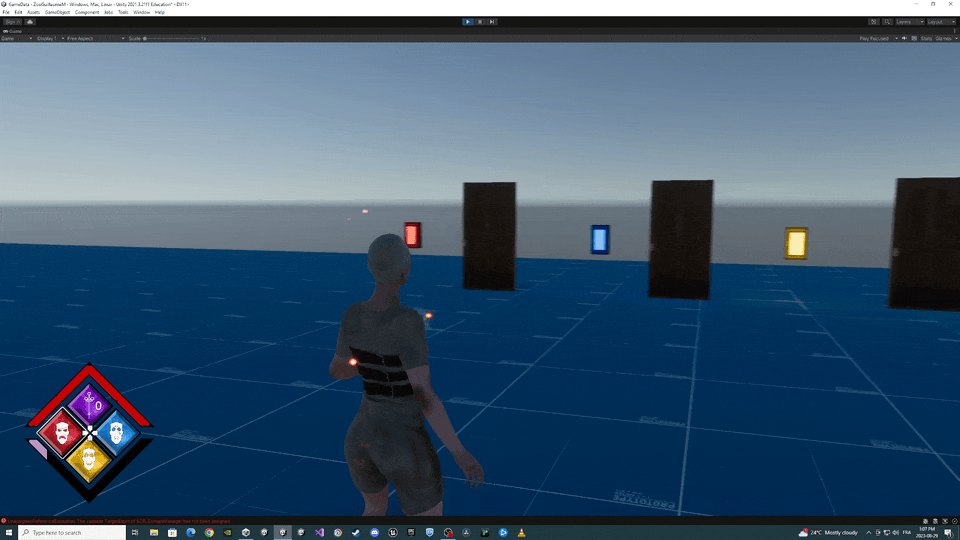
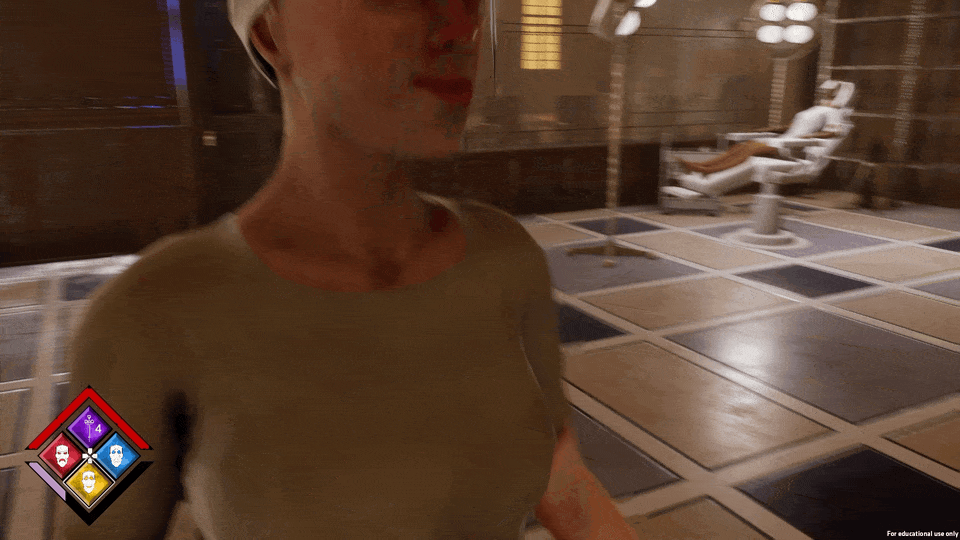
2.
Fuse Box : Fuse boxes that can be linked to door locks provide level designers with a powerful ingredient to create navigation challenges.
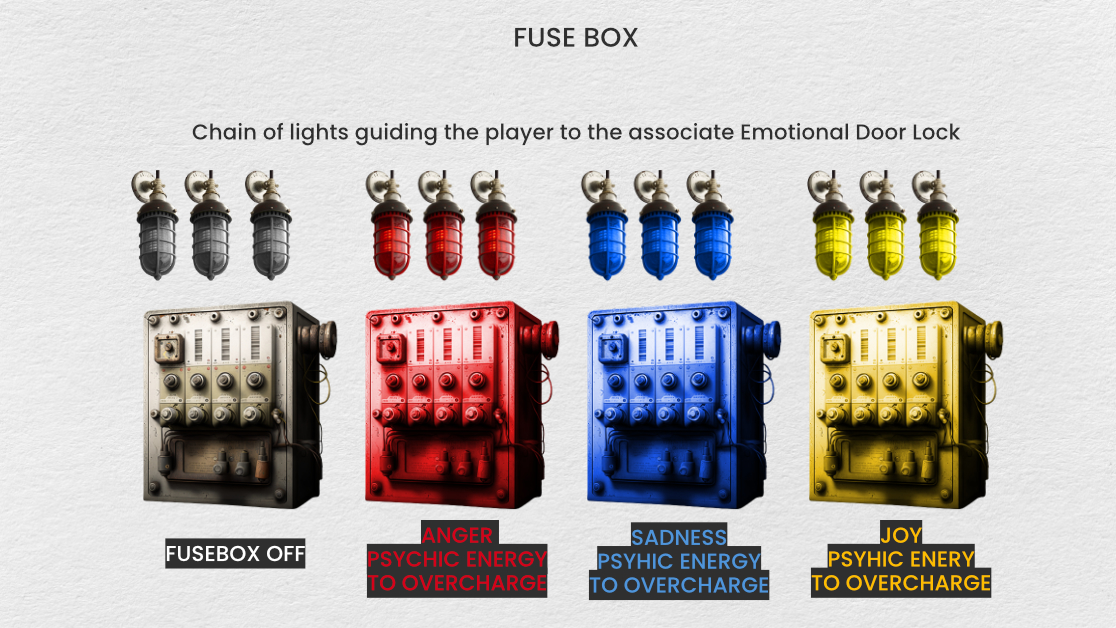
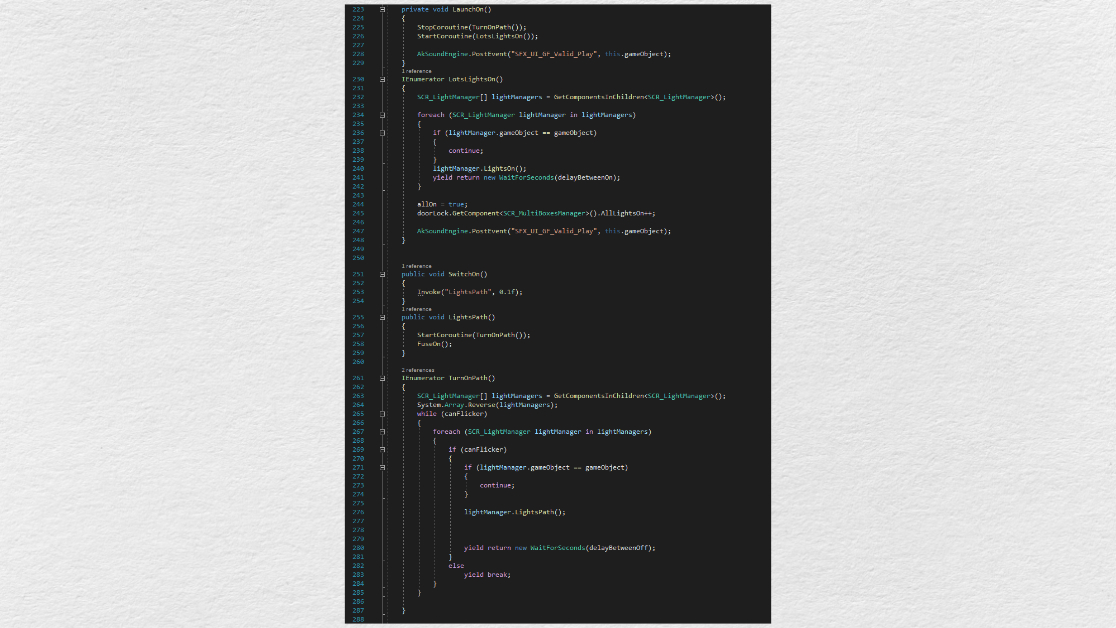
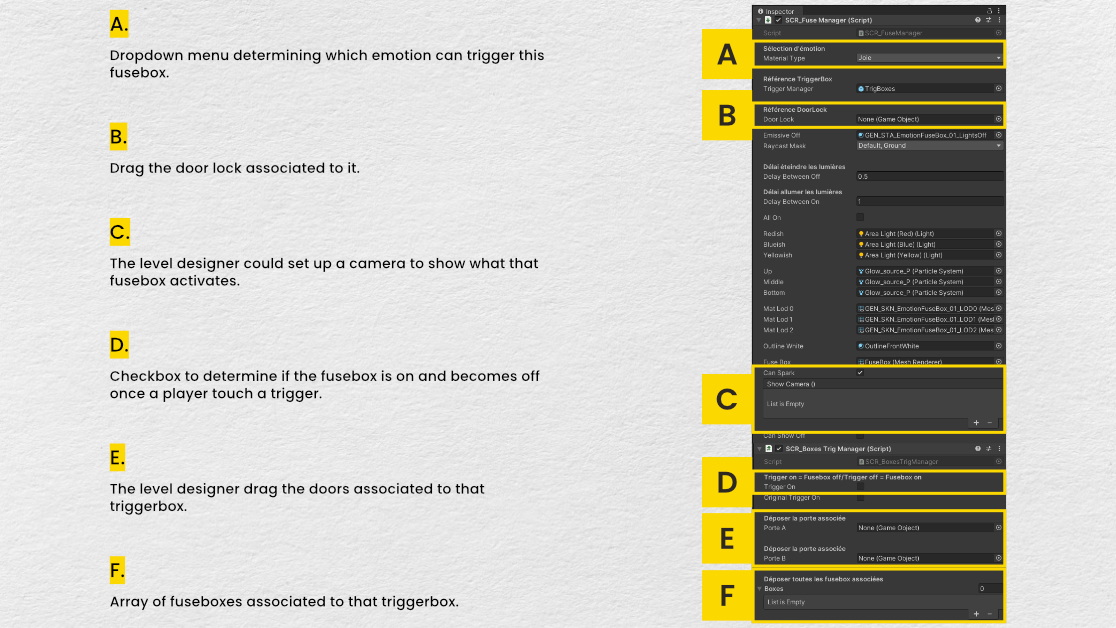

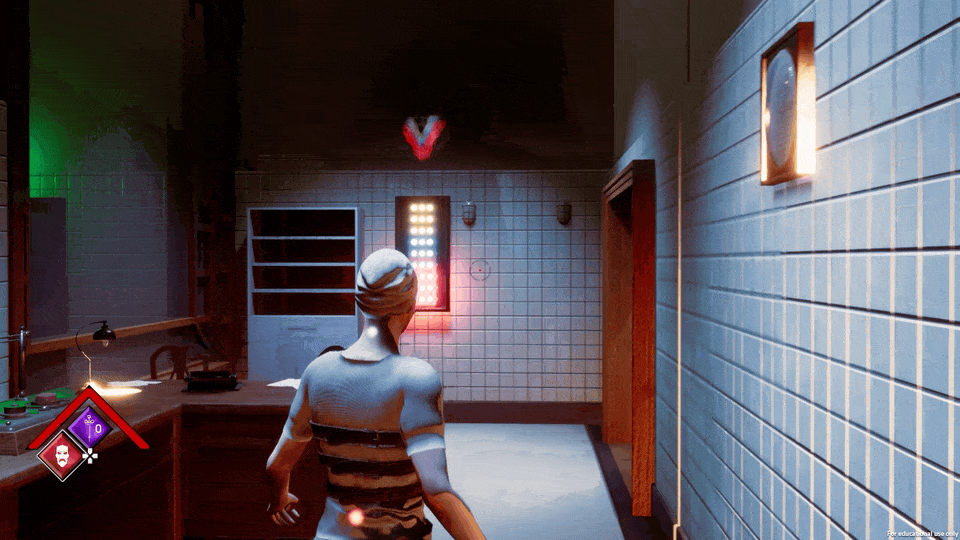
3.
Safe : Safes in the game are linked to decipherable clues, requiring players to unveil psychic combinations. Successfully unlocking safes yields rewards like stained glass, enhancing skill tree upgrades.



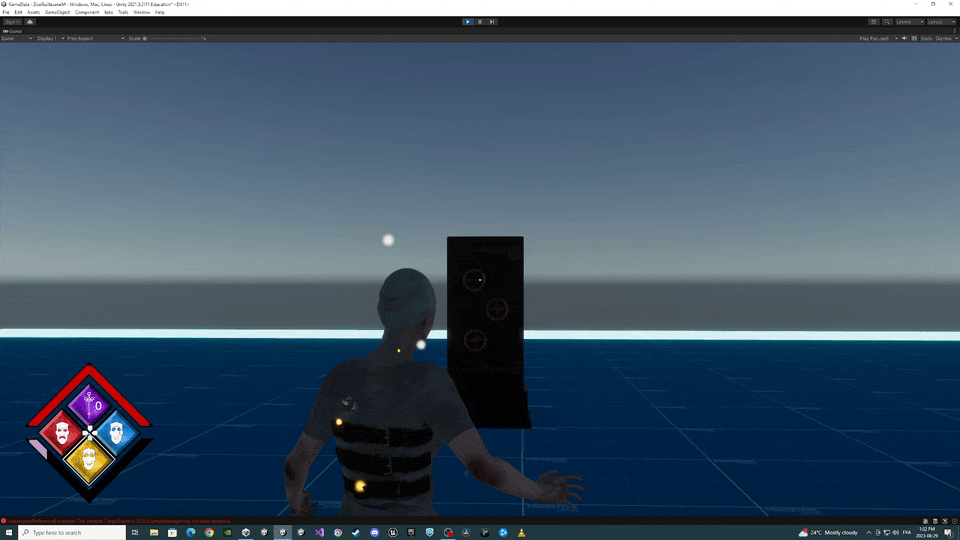

4.
Turing Computer : The Turing computer connection puzzles serve as a prerequisite step before entering "psynaptic projections", adding depth and challenge to the game progression.
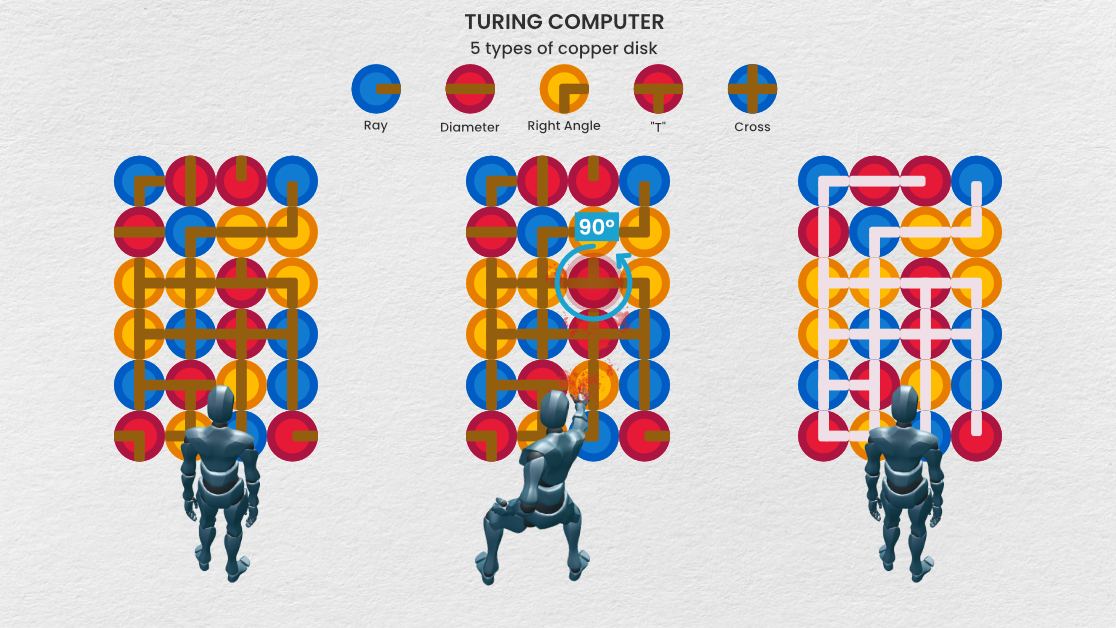
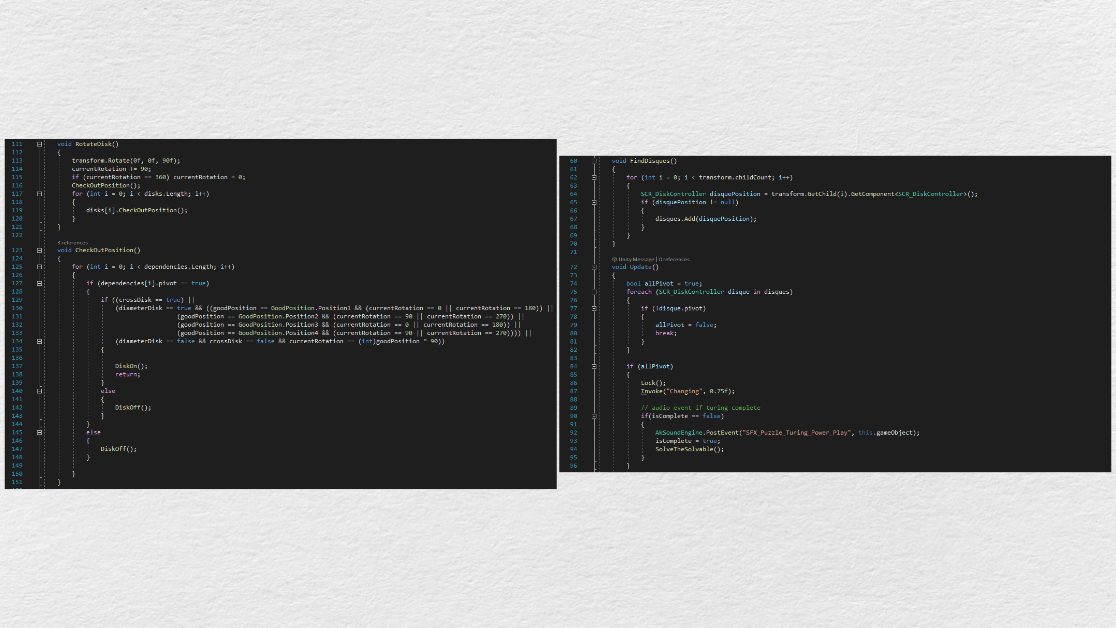

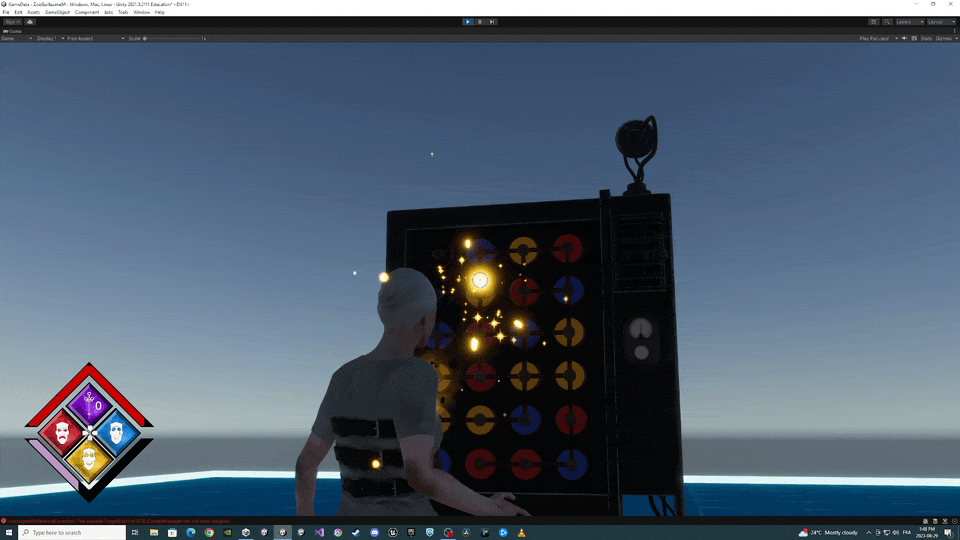
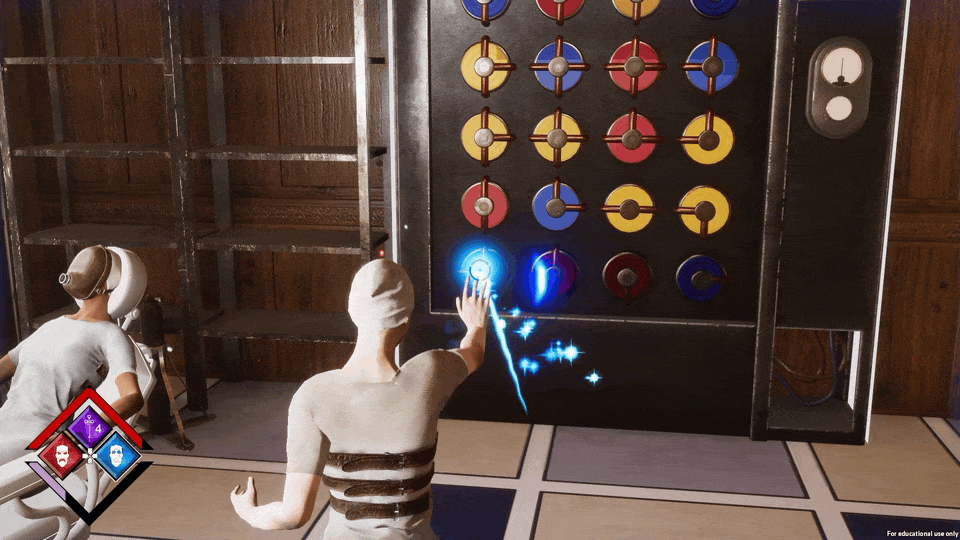
Hedera Puzzles GDD (click directly on the image)
D. Psynaptic Projection
In our design process, we pursued one of our core pillars by introducing a psychedelic dimension to the end of our levels through the "psynaptic projection". This unique feature required players to liberate their fellow guinea pigs by engaging with their neural pathways and synapses, adding a thought-provoking and psychologically immersive element to our game design.
I played a pivotal role in developing tools that empowered our level designers, simplifying their workflow and fostering creativity as they crafted that intricate game feature.
I played a pivotal role in developing tools that empowered our level designers, simplifying their workflow and fostering creativity as they crafted that intricate game feature.
1.
Simon Say's Like Neurons Puzzle : Psynaptic projection immerses players in a psychedelic camera effect, a feature I developed. To solve puzzles and unlock new powers, players must recreate emotional psychic sequences within the consciousness of their fellow guinea pigs. Upon success, they are rewarded with a final revelation that enhances their understanding and abilities in the game.
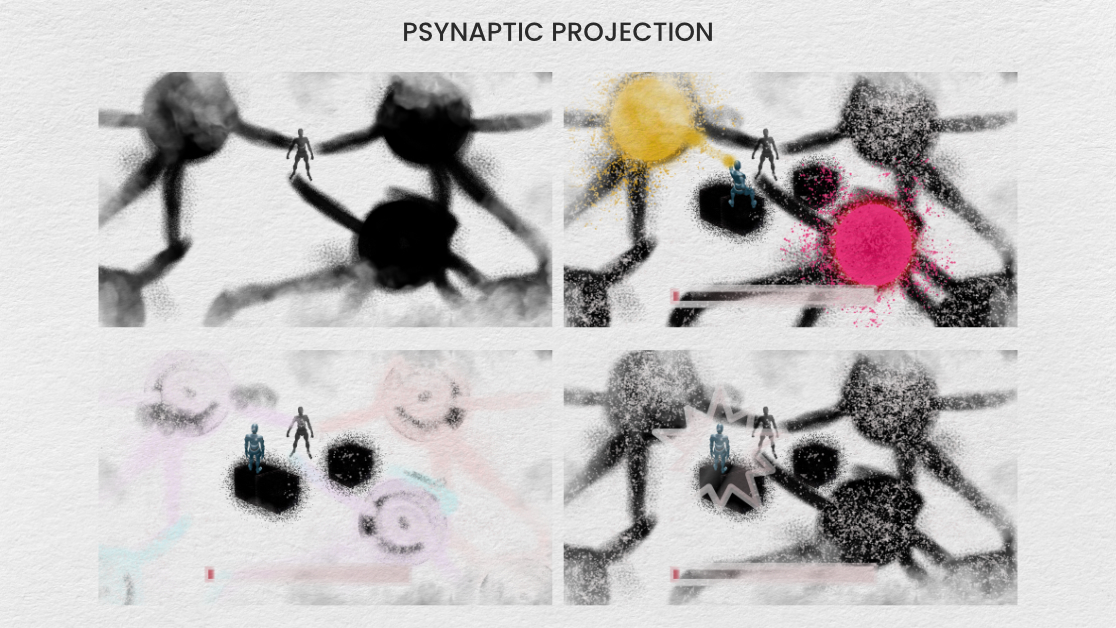
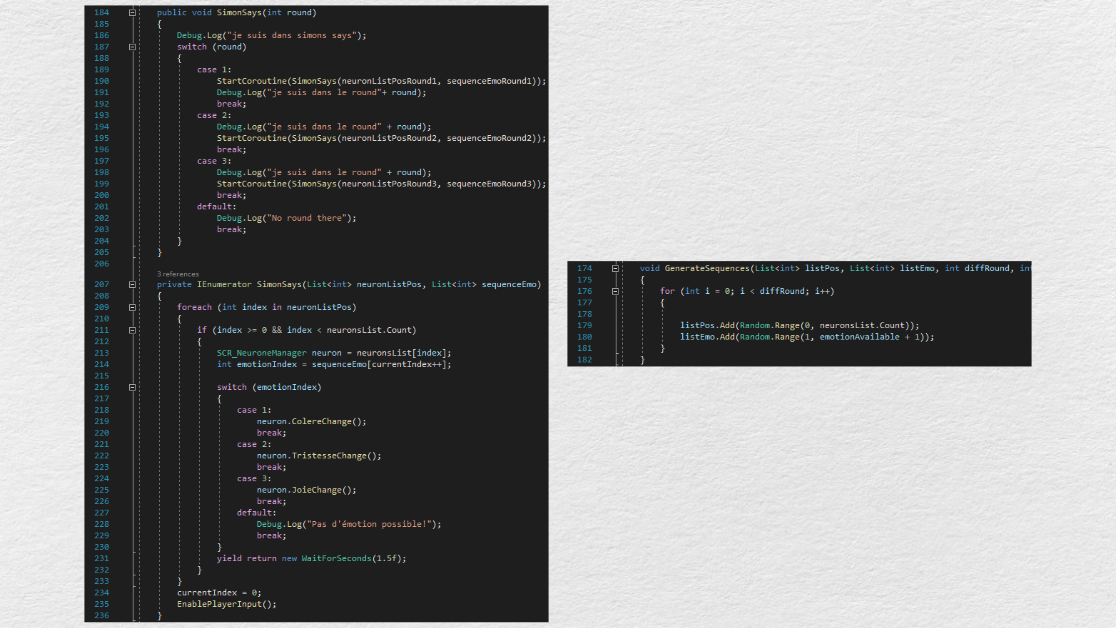

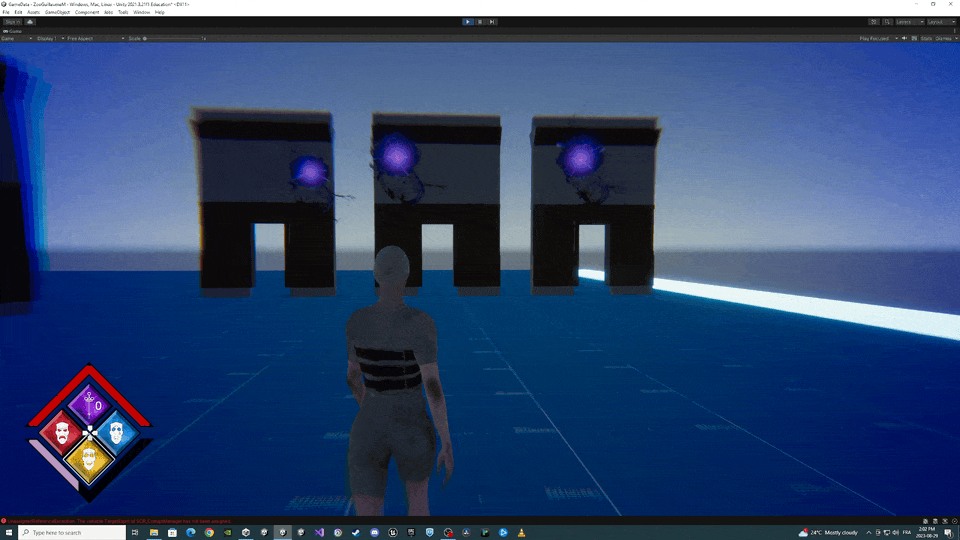
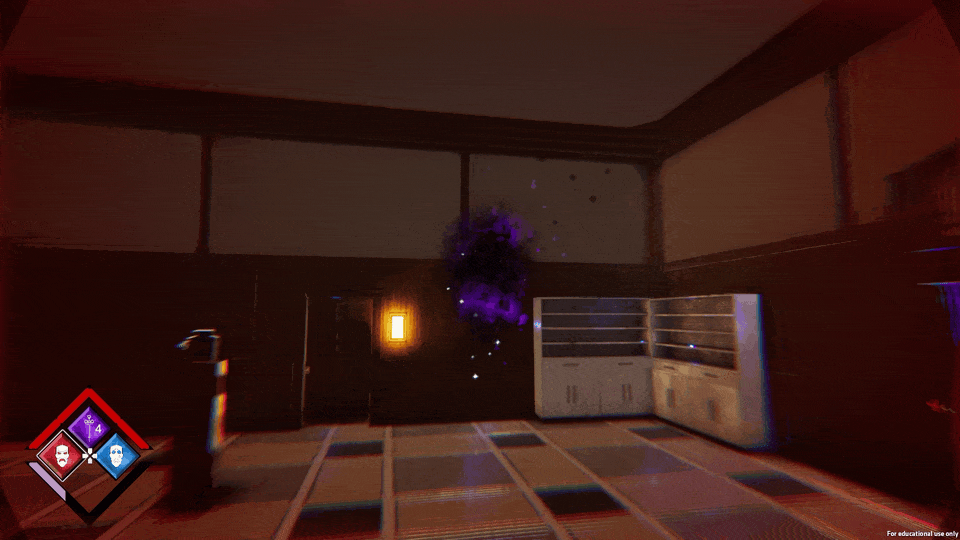
Hedera Psynaptic Projection GDD (click directly on the image)
Improvements, Additions and Feedback
1.
Improved project scoping : We need a more comprehensive overview of the entire project to ensure that our development aligns closely with our vision and goals.
2.
Enhanced combat feature scoping : A refined understanding of our combat mechanics and enemies is crucial to achieve a more fluid gameplay experience in line with our game's pillars and core elements.
3.
Revised timeline for level design : Developing a more structured timeline will enable our level designers to create gameplay blocks more effectively, allowing them to master the game's various ingredients.
4.
Strengthen psynaptic projection : We should invest more time and attention into refining the psynaptic projection feature. Some elements have been designed and coded but integrating and mastering them has been challenging due to timing issues, and we need to address this to enhance the game's overall quality.
Developer :
Campus ADN
Year :
2023
# People Team :
35+
Platform/Engine:
Unity
Client:
Campus ADN
Genre(s):
Third Person Shooter
My Role:
Lead Game Designer/Game Designer/Developer


